Beginning Farms
Relevant Events
Boots in the Barn: Cornell Dairy Research Updates
January 13, 2026
January 20, 2026
January 27, 2026
February 3, 2026
February 10, 2026
February 17, 2026
February 24, 2026
Webinar: Converting Old Dairy Barns into swine Facilities
January 21, 2026 : Webinar: Converting Old Dairy Barns into swine Facilities
Southern Tier Crop Congress
January 28, 2026 : Southern Tier Crop Congress
Belfast, NY
Northeast Grazing and Livestock Conference
January 30 - January 31, 2026 : Northeast Grazing and Livestock Conference
Manchester, NH
Winter Field Crops Meeting
February 3, 2026 : Winter Field Crops Meeting
North Collins, NY
Don't Put All Your Seeds in One Basket
Katelyn Miller, Field Crops and Forage Specialist
Southwest New York Dairy, Livestock and Field Crops Program

While harvest has stretched on for many, attention is beginning to shift toward planning for the 2026 growing season. This article highlights key factors to consider as seed ordering approaches, helping ensure selections align with field conditions and production goals.
What Did we Learn About Internal Parasites in Small Ruminants this Year?
Amy Barkley, Team Leader & Livestock Specialist
Southwest New York Dairy, Livestock and Field Crops Program

In 2025, our team evaluated 10 sheep and goat farms in the spring and fall for levels of parasites and parasite resistance to our deworming classes. The results of this study, including tips on reducing worm burdens on-farm, are shared here.
The Tillage Toolbelt: Pest Management
Rounding out the final article in this series on till vs no-till, we're finally focusing on how your tillage decisions can impact the pest pressures on your farm. Your tillage decisions present different challenges and opportunities as it relates to pest management.
Looking Past the Bin Door
Katelyn Miller, Field Crops and Forage Specialist
Southwest New York Dairy, Livestock and Field Crops Program
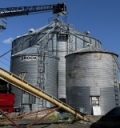
As grain enters the bins, I've been having more frequent conversations about commodity marketing. There is no one size fits all approach, but one thing remains the same: understanding your cost of production is the foundation of every sound management decision.
Learn From Your Silage Harvest

The number of moving parts and pressure to get everything correct during corn silage harvest can be daunting. It is worthy to recognize that the harvest season is a valuable learning and planning opportunity. Documenting crop progress and challenges throughout the season is a good practice, but information collected during the harvest of the single most utilized ingredient in many dairy rations can be particularly valuable.
Governor Hochul Announces Two Grant Opportunities
Governor Hochul has announced two grant opportunities to help address the impacts of climate change and protect water quality. Funding is available in four tracks: Livestock Management (alternative waste and precision feeding management), Adaptation and Resiliency, Healthy Soils, and Agricultural Forestry Management. Contact your local Soil & Water Conservation office for more information.
The Tillage Toolbelt: Soil Structure
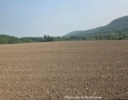
Continuing this series from last month, we're taking a look at all of the differences between tilling and no-till systems to help you figure out which system is best for your farm. We previously looked at how tillage decisions impact nutrient cycling, and this time we're considering how the same decisions can change soil structure. Your choice to till or not to till can significantly change your soil structure, determining what kinds of challenges may appear or which may be avoided.
Who Invited Knapweed?
Katelyn Miller, Field Crops and Forage Specialist
Southwest New York Dairy, Livestock and Field Crops Program

Knapweed is an aggressive weed that spreads rapidly and reduces the quality of fresh and baled forages. Controlling it however, is not a simple answer. Check out this article for more information about the weed and tips on how to manage it.
The Tillage Toolbelt: Nutrient Cycling
The decision to till or no-till is not a one size fits all approach. This article series aims to clear up some of the confusion about the ways that tillage (or a lack thereof) impacts our fields, and how the challenges you face could determine whether it's the right move for you.
Combine Adjustments to Minimize Corn Harvest Losses

Volunteer corn infestations popping up in your crop rotation can reduce crop yield and require additional herbicide considerations. Now is the time to prepare for harvest by calibrating your equipment to minimize harvest losses.
Management Considerations for Immature and Frosted Corn Silage
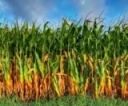
With our average frost date fast approaching, it's time to consider how we are going to handle corn that is either immature or experiences a frost. Check out this article for tips on how to manage this forage.
Determining Forage Inventories with Pen and Paper
Amy Barkley, Team Leader & Livestock Specialist
Southwest New York Dairy, Livestock and Field Crops Program

Computer-based forage inventory calculators are excellent tools, but a good ol' pen and pad of paper can help you achieve the same result. This article walks you through calculating a forage inventory step-by-step, while also providing an example to follow along with.
Corn Silage: Rain Following Dry Conditions

Recently several areas have received much needed rain and while it has not been enough to alleviate the dry conditions for most, it has been enough to "perk up" some corn fields. With rain following dry conditions, a final effort is triggered for the corn plant to finish its lifecycle, putting energy into kernel development. There are challenges and opportunities that arise with this phenomenon, that you can learn more about in this article.
Ferment to Be: Silage Inoculants
Katelyn Miller, Field Crops and Forage Specialist
Southwest New York Dairy, Livestock and Field Crops Program

Proper storage in the bunk should always be a priority, but challenging growing seasons like the one we've had this year reinforce the importance of proper ensiling. One bunk management strategy to consider is the use of silage inoculants.
Late Season Forage Considerations for 2025

The challenges of the 2025 growing season continue with questions about adequate quantity and quality of forages to meet the needs of dairy herds in the coming year. As we look for a strong finish to the growing season to alleviate some of these challenges it is important to assess your forage situation and take steps to meet the forage needs of the herd.
Guidance for Manure Applications on Prevented Planting Acres
Many acres across New York were unable to be planted to corn, soybeans or new perennial forages due to extended wet conditions during this spring's planting season, resulting in several crop insurance claims. Check out this guidance for manure applications on prevented planting acreage for farms under CAFO permit and/or following a CNMP.
Pricing Corn Silage - Preliminary Fall 2025 Estimates

You might think it's too early to talk about corn silage harvest, but this season's challenges have many re-evaluating plans. Preliminary estimates from John Hanchar, NWNYDLFC, put the corn silage price at approximately $63 per ton. These early estimates can support informed decision-making as cropping and forage strategies shift.
Rain vs. Herbicides
Katelyn Miller, Field Crops and Forage Specialist
Southwest New York Dairy, Livestock and Field Crops Program

As a result of staggered planting, herbicide application timings have been spread out over a significant portion of time. Weeds and weed control are impacted by wet weather and subsequent flooding conditions for a variety of reasons.
Pesticide Label Changes Brought on by the Endangered Species Act
Katelyn Miller, Field Crops and Forage Specialist
Southwest New York Dairy, Livestock and Field Crops Program

Changes to our pesticide labels are coming including mitigation strategies for spray drift and runoff/erosion. Check out this article to see how these updates will appear on our product labels.
What to Know Before You Mow
Katelyn Miller, Field Crops and Forage Specialist
Southwest New York Dairy, Livestock and Field Crops Program
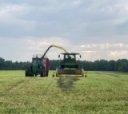
Manure continues to be spread onto fields, tillage implements have been in motion, corn and soybeans are starting to get planted, but have you thought about first cutting yet? Collecting this forage offers an opportunity to capture a high quality and quantity of forage, but doing so in a timely manner can come with an array of obstacles.
Ag Safety and Health Springtime Preparations

Spring is one of the busiest times of the year on a farm. Even if things are busy, keep health and safety to the forefront of what you do.
Worried About Being Classified as a Hobby Farm by the IRS? What you Need to Know

Tax season is over, but you may be wondering if you may be audited by the IRS or incorrectly classified as a hobby farm. This article investigates the classification of farms as businesses vs hobbies, what the IRS is looking for in a business, and what records you need to keep to prove you're a legitimate business.
Growing Degree Days: Another Tool in the Harvest Toolbox
Katelyn Miller, Field Crops and Forage Specialist
Southwest New York Dairy, Livestock and Field Crops Program

Growing Degree Days (GDD) are a valuable tool for estimating crop development and optimal harvest timing. Whether tracking corn maturity or alfalfa harvest, using GDDs alongside other measurements can help improve decision-making and ensure better crop management.
Egg Prices are Historically High - Time to Re-Evaluate your Costs of Production
Amy Barkley, Team Leader & Livestock Specialist
Southwest New York Dairy, Livestock and Field Crops Program

It takes a whole lot to produce a dozen eggs! Now's a great time to evaluate your costs so that you can charge a fair price that still enables you to make a profit.
It is Time to Check the Planter

It's April and planting season will be here before we know it. Take some time to check over your planter and conduct some maintenance so you are ready to hit the ground running in May.
USDA Expediting Direct Economic Assistance to Agricultural Producers

U.S. Secretary of Agriculture Brooke Rollins announced that the U.S. Department of Agriculture (USDA) is issuing up to $10 billion directly to agricultural producers through the Emergency Commodity Assistance Program (ECAP) for the 2024 crop year. Eligible producers must report 2024 crop year planted and prevented planted acres to FSA on an FSA-578, Report of Acreage form. Contact your local FSA office for more information.
Practical Lessons Learned from Advanced Soil Health Training: Part 3
Katelyn Miller, Field Crops and Forage Specialist
Southwest New York Dairy, Livestock and Field Crops Program

The third and final session of the Advanced Soil Health Training Cohort focused on two critical topics: no-till and planting green. The session provided valuable insights through expert presentations and firsthand experiences shared by farmers through presentations and panel discussions.
Please Check H.E.R. Out: Ensuring a Compassionate End of Life
Katie Callero, Dairy Management Specialist
Southwest New York Dairy, Livestock and Field Crops Program
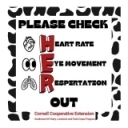
Unfortunately, euthanasia is a decision every farmer has to make. This article stresses the need for clear euthanasia protocols, proper staff training, and emotional support for farmers making these difficult decisions.
Winter and wet weather manure spreading reminders
NYS Department of Environmental Conservation is reminding farmers to be mindful of conditions that are high risk for runoff.
Field Equipment or Road Equipment?

As farms continue to evolve, truly addressing soil management in forage production requires more focus, with the distinction between field equipment and road equipment being an important opportunity.
So You Want To Become A Certified Pesticide Applicator?
Katelyn Miller, Field Crops and Forage Specialist
Southwest New York Dairy, Livestock and Field Crops Program

Have you ever thought about becoming a Certified Pesticide Applicator but felt intimated by the process? This article walks through the steps to become a Certified Private Pesticide Applicator, including the necessary training, requirements, and testing as required by the Department of Environmental Conservation (DEC).
Win a Grain Rescue Tube and Training for Your Local Fire Department
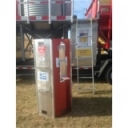
Win a grain rescue tube and training for your fire department! Nationwide Insurance once again is teaming up with the National Education Center for Agricultural Safety (NECAS), Peosta, Iowa, to award emergency first responders with grain rescue tubes and hands-on rescue training to help save lives.
Proper Stored Grain Maintenance over the Winter: A Key to Pest Management

The combination of low grain prices and above average yields have led many farms to leave the grain in the bin and hope for better prices this spring. Check this article out for tips on how to protect your stored grain.
Fertilizer Calculations
Katelyn Miller, Field Crops and Forage Specialist
Southwest New York Dairy, Livestock and Field Crops Program

This article provides a detailed guide on how to calculate fertilizer applications based on soil test results, including examples of both granular and liquid fertilizers. It covers understanding fertilizer labels, determining nutrient content, and applying the correct amount of fertilizer to meet crop needs for optimal growth.
Practical Lessons Learned from Advanced Soil Health Training: Part 2
Katelyn Miller, Field Crops and Forage Specialist
Southwest New York Dairy, Livestock and Field Crops Program

The article discusses the insights gained from a soil health cohort session on cover crops, focusing on species selection, decision support tools, and root demonstrations. It also highlights how cover crops can improve soil health, enhance pest management, and provide valuable benefits for farm productivity and sustainability.
Does Cropping System Matter for Biologicals?

Biologicals are a hot topic in agriculture. This article highlights the uncertainties we face with their use, especially considering our different cropping systems.
Corn Stunt: A New Disease and A New Insect Vector for New York State

Corn stunt is a new corn disease that has been identified in four New York Counties this year. Symptoms present similarly to other stresses in corn, including drought, soil compaction, and phosphorous deficiency.
Colostrum Construction: Building a Firm Foundation
Katie Callero, Dairy Management Specialist
Southwest New York Dairy, Livestock and Field Crops Program
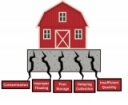
Good colostrum management builds a strong foundation for cow health and production. Building this strong foundation requires four key steps: create a detailed plan, choose quality materials, build the foundation, evaluate and adjust. There are also common errors in colostrum management that can create cracks in your foundation. Check out this article to make sure you have a firm foundation.
Decoding Your Soil Test Results
Katelyn Miller, Field Crops and Forage Specialist
Southwest New York Dairy, Livestock and Field Crops Program

Regular soil sampling is important for improving management practices, but many people feel confused when they receive their test results. With so much information, it can be hard to know what to do next. In this article, I'll explain the different measurements found in soil test reports and how to use this information effectively.
Manure-Handling Emergency Action Plans

Every farm, regardless of size, that handles animal waste must be prepared to manage a manure-handling emergency. While prevention is the best strategy to reduce the risk of this type of emergency, not all manure spills can be prevented; therefore, a written emergency action plan should be developed for every farm. This article highlights the components in an emergency action plan and their importance.
Recommended Procedures for a Between-field Combine Clean-out

Cleaning out your combine can help reduce the spread of weed seed, including herbicide resistant weeds. Check out this article to provide tips on how to cleanout your combine during the growing season!
State Opens up $4.25M in Grant Funding for Beginning and Disadvantaged Farmers
Amy Barkley, Team Leader & Livestock Specialist
Southwest New York Dairy, Livestock and Field Crops Program

Two competitive state grants are available to fund start-up, improvement, or expansion of farm operations; support for marketing, training, construction, and more! Applications open October 25th and December 30th, closing January 24th, 2025 and December 30, 2024, respectively.
Drones in Agriculture
Katelyn Miller, Field Crops and Forage Specialist
Southwest New York Dairy, Livestock and Field Crops Program

This article discusses how drone technology fits into agriculture. While drones may offer some benefits, farmers should consider costs, regulations and farm needs before adopting them.
Selling Eggs? Here's What You Need to Know
Amy Barkley, Team Leader & Livestock Specialist
Southwest New York Dairy, Livestock and Field Crops Program

Selling eggs can bring in some extra farm income, alleviate the stress of a full egg fridge (admit it, we all have one in the spring and summer!), and help you feed your community. Small flock owners can sell eggs to individuals, at a farm market, or wholesale to NYS stores for retail sale. As eggs are produced and prepared for sale, there are some safety considerations and state regulations that need to be kept in mind.
Practical Lessons Learned from Advanced Soil Health Training
Katelyn Miller, Field Crops and Forage Specialist
Southwest New York Dairy, Livestock and Field Crops Program

Recently, I participated in the first meeting in the Advanced Soil Health Training Cohort hosted by American Farmland Trust. Topics that we cover throughout the program include increased soil health, cover crop management, conducting soil health assessments, and economic considerations of adoption. With the first meeting having taken place in August, I wanted to share some of my lessons learned.
Manure Management - The Safety Aspect

As manure gets spread onto corn fields this fall, it's important to remember that manure gas is incredibly dangerous. Take precautions to protect yourself, your family, and your employees as you spread manure from storage.
Managing Weeds in Grass Pastures
Katelyn Miller, Field Crops and Forage Specialist
Southwest New York Dairy, Livestock and Field Crops Program

With summer coming to an end, it can be a great time to control some of our pesky pasture weeds. If you're interested in managing weeds in your pastures, check out this article for more information.
Raising Pigs on Pasture: Lessons Learned from North Carolina
Amy Barkley, Team Leader & Livestock Specialist
Southwest New York Dairy, Livestock and Field Crops Program

At a recent talk by a pig producer with over 20 years' experience as part of the Carolina Meat Conference highlights major considerations for raising pigs on pasture.
Managing Flood Damaged Crops
With the recent flood damage, crops were unfortunately damaged. This article highlights how to manage crops that were damaged by floods.
Assessing Forage Crop Damage from Recent Weather Events
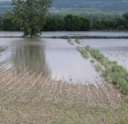
Flooding has had a devastating impact in the region this past weekend. Regardless of whether a few acres or several fields were affected, it is helpful to get out and scout your crops to understand the impacts. Cornell Cooperative Extension reminds farms affected by recent storm damage to document and share any impacts the weather may have had on their home or business.
Understanding Tar Spot
Katelyn Miller, Field Crops and Forage Specialist
Southwest New York Dairy, Livestock and Field Crops Program

Tar spot, a foliar disease of corn, has made its way into New York State's crop production. Learn more about the disease, what it can be confused with, and how to manage it on your farm.
Weekly USDA Farmer's Market Price Reporting is Starting to Come in!

This weekly price reporting information shows the range and average prices that farmers across the state receive for vegetables, fruit, meats, and dairy products using Square Point of Sale software. This article shares more about the project as well as opportunities to get involved and contribute to the price reporting.
Does a warm winter mean increased insect pressure?
Katelyn Miller, Field Crops and Forage Specialist
Southwest New York Dairy, Livestock and Field Crops Program

The past winter, the weather proved to be one for the record books. New records were set for high temperatures, snowfall was low, and Lake Erie remained ice free. What might this mean for pest pressure? Check out this article to find out.
Early Season Pests
Katelyn Miller, Field Crops and Forage Specialist
Southwest New York Dairy, Livestock and Field Crops Program

With the uncertainty around what pest pressure will look like this year, it's a good time to bring this article back to highlight pests that we frequently see early in the season.
All Things Tillage
Katelyn Miller, Field Crops and Forage Specialist
Southwest New York Dairy, Livestock and Field Crops Program

Do you have questions about tillage? You're not alone. Every management decision that gets made on the farm has tradeoffs, and tillage is no exception. Check out this article to learn more about some commonly asked tillage questions.
Managing forage in the face of more frequent extreme weather events
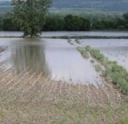
The list of notable weather events in 2023 is long and varied — from drought In the forage world, wild swings in winter weather can be a concern for conditions in parts of the Midwest, to extreme flooding in portions of New England, to smoky skies from Canadian wildfires. Stepping back from the seasons' weather, to larger climate trends, 2023 set a new global record for the warmest year, and rainfall patterns continue to become more extreme. While we cannot manage the weather, understanding the increased likelihood of these events, and evaluating the goals of our forage program, provide the best chance to minimize the negative implications for these extreme events.
A Review of the Endangered Species Act and Pesticides: An Example
Katelyn Miller, Field Crops and Forage Specialist
Southwest New York Dairy, Livestock and Field Crops Program

On March 20th, 2024, the Endangered Species Act Committee of the Weed Science Society of America (WSSA)'s hosted an informative webinar on how pesticide labels may change to protect endangered species. This article provides a quick summary of action items that were presented. You can also watch the recording on NYSIPM's YouTube channel.
MeatSuite is a Free Online Database for Farmers to Advertise Bulk Meats
Amy Barkley, Team Leader & Livestock Specialist
Southwest New York Dairy, Livestock and Field Crops Program

This online database of farms received over 8,300 visits from NYS customers in 2023 and is anticipated to gain momentum into 2024. You can join for free at any time. If you're already a member, this is a friendly reminder to make updates to your page.
What Can I Expect from a Freezer Lamb? by Betsy Hodge
Amy Barkley, Team Leader & Livestock Specialist
Southwest New York Dairy, Livestock and Field Crops Program
If you're selling lamb as a whole animal, it's important that your consumers know how much meat will be available to take home and about what to anticipate in terms of cuts. This story follows an unshrunk, wool-on lamb butchered through a cooking and cutting workshop, and shares what to expect.
Integrated Pest Management
Katelyn Miller, Field Crops and Forage Specialist
Southwest New York Dairy, Livestock and Field Crops Program
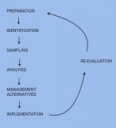
Increasing concerns over environmental sustainability in agriculture have spurred interest in Integrated Pest Management (IPM). This approach combines various techniques to control pests while minimizing environmental impact. Check out this article to learn more about IPM and how it can impact your pest management decisions.
Productive Shop Checklist

The beginning of March has been uncharacteristically warm but we can't forget that there is likely more winter ahead of us. Take the time to check out your farm shop and get it ready for a busy spring and summer season while there's still time.
Introduction to Worker Protection Standard
Katelyn Miller, Field Crops and Forage Specialist
Southwest New York Dairy, Livestock and Field Crops Program
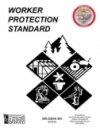
The Worker Protection Standard regulation was originally issued in 1992 to reduce the risk of injury and illness resulting from pesticide exposures. It covers pesticides used in the production of agricultural plants on farms, forests, nurseries, and greenhouses. Determine if you fall under the Worker Protection Standard.
Brix: The Panacea to Grass-Based Finishing?
Amy Barkley, Team Leader & Livestock Specialist
Southwest New York Dairy, Livestock and Field Crops Program

There are theories that Brix concentration in forages can be used to determine the relative energy value of forages, and that increasing the Brix can put pounds on grass-finished animals faster. This article explores the relationship between plant sugars, pasture conditions, and finishing timelines for grass-based systems.
Livestock Checkoff Programs 101
Amy Barkley, Team Leader & Livestock Specialist
Southwest New York Dairy, Livestock and Field Crops Program

You may have heard of checkoff programs, but aren't sure exactly what they are, or what they mean to you as a livestock producer. This article sheds some light on the basics.
Tips and Tricks for Feeding Laying Hens
Amy Barkley, Team Leader & Livestock Specialist
Southwest New York Dairy, Livestock and Field Crops Program

Feeding laying hens doesn't have to be complicated! This article shares feeding recommendations for complete feeds both now and in the summer months as well as guidelines for supplementing with kitchen scraps and/or pasture.
Preparing and Storing Farm Equipment for Winter

Winter in the Northeast is notorious for extreme temperature changes and varying moisture levels. This article summarizes best practices from equipment manufacturers to keep your investments protected from harsh winter conditions.
Cattle Injection Tips
Amy Barkley, Team Leader & Livestock Specialist
Southwest New York Dairy, Livestock and Field Crops Program

Giving injections of vitamins, vaccinations, dewormers, and antibiotics is a scientific process. Following label instructions, giving injections in the "injection triangle", and opting for sub-cutaneous (sub Q) injections reduces the risk of muscle lesions and trim loss.
How to Plan Your Breedings to Target Specific Holidays

This article shares the step-by-step planning process that goes into growing out kids and lambs for specific harvest dates. This can help you manage your herd or flock for spring holidays or can help you grow out animals that will be ready for pre-scheduled harvest slots at your local abattoir.
Custom/Third Party Manure Applicator Registration - Update & Resources

NYSDEC now requires commercial manure applicators that apply manure on CAFO farms to register with the department and complete annual reporting. While applicators need to register by January 18, 2024 to be in compliance, it is recommended towait until after January 1, 2024 to do so. Kirsten Workman with PRO-DAIRY has provided comments about this new requirement and resources for registration.
2023 NY Pesticide Reporting Reminder Notice and Electronic Reporting Requirement

If you currently hold an active certification allowing you to make commercial pesticide applications in calendar year 2023, you are required by law to submit an acceptable annual report of your pesticide applications (or lack thereof) no later than FEBRUARY 1, 2024. To ensure you submit an acceptable report to the DEC, check out this notice sharing reporting changes and common reporting issues.
Fall Lime Application
Katelyn Miller, Field Crops and Forage Specialist
Southwest New York Dairy, Livestock and Field Crops Program

Spring activities become overwhelming quick, so think about making lime applications now. Fall lime applications allow time for lime to react in the soil, and makes for one less task in the spring.
Feeding Cull Pumpkins to Livestock

Cull pumpkins, gourds, and squashes can provide a good source of nutrients for cattle. They have high moisture, but relatively high protein and TDN.
Confined Spaces: Hazards of Manure Gases

While new manure handling systems are more efficient and reduce manual labor, farmers and ranchers must understand the hazards associated with working in and around confined spaces where manure is stored. Keep yourself and employees safe this season by understanding the risk of manure gases!
Selecting Seed Varieties
Katelyn Miller, Field Crops and Forage Specialist
Southwest New York Dairy, Livestock and Field Crops Program
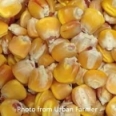
As we round out corn season, it's time to look back at the passing season and think about seed selection for next year. Here are some tips to keep in mind to help you select seed that fits your operational needs.
Field Nitrogen Balances for Corn Silage

A field nutrient balance is an end-of-season evaluation tool defined as the difference between nutrients accessible for crop uptake (nutrient supply), and nutrients removed with forage harvest (nutrient uptake). Learn how to derive field nitrogen balances for corn silage in order to better manage your nitrogen use.
Corn Ear Rots and Mycotoxins

There are many pathogens that cause ear rots. Identify which ones are associated with mycotoxin contamination!
Evaluating Your Pasture System
Katelyn Miller, Field Crops and Forage Specialist
Southwest New York Dairy, Livestock and Field Crops Program

As we reach the end of grazing season, it's a great time to evaluate your pastures production this past year. Did it produce what you expected? This article plus the handout should serve as a guide to help look at your pasture's productivity.
Please help us add contacts to our SWNY Farm Service Provider Directory!
Amy Barkley, Team Leader & Livestock Specialist
Southwest New York Dairy, Livestock and Field Crops Program

We want to know which categories and contacts would be most helpful to you! Please take 2 minutes to answer our anonymous survey at https://tinyurl.com/SWNYServiceProviders.
Soybean Cyst Nematode in NY
Katelyn Miller, Field Crops and Forage Specialist
Southwest New York Dairy, Livestock and Field Crops Program

Soybean Cyst Nematode is the #1 yield reducing pest of soybeans. It cannot be eradicated entirely, so read on to learn more about the impact of this pest and management strategies.
It's Soil Sampling Season
Katelyn Miller, Field Crops and Forage Specialist
Southwest New York Dairy, Livestock and Field Crops Program

Soil testing is the building block of any fertilizer management program, allowing you to evaluate your pH, organic matter, and various macronutrient and micronutrient levels in your soil. Fall is a popular time of year to take soil samples, so let's discuss how to get your soil from the field and into the lab for analysis.
Bunk Silo Safety
Katelyn Miller, Field Crops and Forage Specialist
Southwest New York Dairy, Livestock and Field Crops Program

As corn silage begins to enter bunks for the year, safety should be a top priority. Here are some tips to keep you and your employees safe in your bunk silo this season.
Perennial Weed Control in Grass Forages

One of the most common weed management questions we often get relates to perennial weed control in grass hay and pasture. Many people want to know when the most optimal time is to control perennial weeds and what herbicides are the most effective. The short answer - late summer and fall with systemic herbicides but there is more to the story.
Poultry Carcass Breakdown Fact Sheet
Amy Barkley, Team Leader & Livestock Specialist
Southwest New York Dairy, Livestock and Field Crops Program

Breaking down a whole processed chicken into its individual parts can be a way to increase the revenue from your chicken and offer customers more choices. This fact sheet takes your step-by-step through the process of taking a whole chicken into whole wings, boneless skinless breast, thighs, and drums. For a PDF or print copy of this fact sheet, reach out to Amy Barkley at amb544@cornell or 716-640-0844.
Strategies for Hay Crops 2023
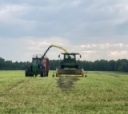
The 2023 season has been a roller coaster for producing dairy quality hay crops across NYS. While yields varied for both first and second cutting, for many the combined total yield is lower than desired and presents concerns about adequate inventories. With potential challenges to inventories, it is worth thinking about strategies for the remainder of the season.
Adding an Insecticide to your Soybean Herbicide Tank Mix
Katelyn Miller, Field Crops and Forage Specialist
Southwest New York Dairy, Livestock and Field Crops Program

If you're going to apply herbicides to your soybeans and know that aphids are present, should you add an insecticide to the tank mix? Check out this article to learn some considerations for making this decision on your farm.
Is it Safe to Eat? Inspecting Poultry for Wholesomeness During Processing
Amy Barkley, Team Leader & Livestock Specialist
Southwest New York Dairy, Livestock and Field Crops Program

When processing poultry under the 1,000 bird exemption, it's important to make sure that the meat is safe to eat. There are some disease processes and conditions that render parts, organs, or even whole birds unconsumable. This article shares what is OK to leave and what should be removed.
The Effects of Dry Conditions on Weed Management

The current weather patterns we have been/are experiencing could significantly impact crop establishment and development; it could also affect weed control success. Read on for some considerations on POST herbicide applications during dry weather.
Farmers: What's in your weed seedbank?

Are you interested in learning more about the diversity of your weed seedbank? The Weed Seedbank Project is looking to recruit 50 farms throughout the state to analyze their weed seedbanks and provide tailored management recommendations. To get involved, leave a message at 315-787-2432 or email bjb342@cornell.edu. The deadline to apply is July 1st, so don't hesitate - apply today! For more information, click here.
The Importance of Hay Moisture
Amy Barkley, Team Leader & Livestock Specialist
Southwest New York Dairy, Livestock and Field Crops Program

Hay moisture is critical to storage success. Moisture that is too high results in bales that come with a fire risk in addition to decreasing feed quality as it moves from the field to the hay ring.
Ask Extension: Can I Raise Pigs on Pasture? by Nancy Glazier
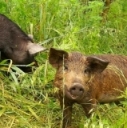
Pigs can successfully be raised on pasture with the right breeds, feed, and management. This article reviews the basics for getting started.
Goats 101 Webinar Archive
Amy Barkley, Team Leader & Livestock Specialist
Southwest New York Dairy, Livestock and Field Crops Program

Just getting started with goats and want to learn more about the basics? This archive of recorded webinars is for you!
Seedcorn Maggot Risk Assessment
Katelyn Miller, Field Crops and Forage Specialist
Southwest New York Dairy, Livestock and Field Crops Program
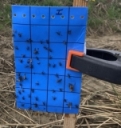
Seedcorn maggot is a pest that impacts large-seeded crops like soybeans and corn. Read on to learn about the life cycle of this pest, how it affects crops, and the research currently taking place to develop prediction models for emergence in New York.
Herbicide-Resistant Weed Management Strategies
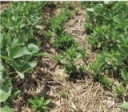
Herbicide-resistant weeds are not new, with the first resistance in the Northeast found in 1977. The list of resistant weeds grows, making the control and management of them an important aspect of farming operations.
RFID Tags - The What, Why, and How
Amy Barkley, Team Leader & Livestock Specialist
Southwest New York Dairy, Livestock and Field Crops Program

RFID tags are one of the USDA-approved official identification tags for cattle, deer, and swine. This article shares some information on what these tags are, how they work, and how you can order them for free for your herd.
13 Safety Tips for Anhydrous Ammonia
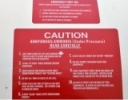
As the recent wet weather has caused us to halt field activities, it's a good time to think about the risks involved with utilizing anhydrous ammonia in our fertilizer programs, and how to protect ourselves from them.
Winter Wheat Fields Are Greening Up

Spring green up is an important time for assessing and managing winter wheat. The growth stage at green-up will depend on planting date and weather conditions, so it is important to scout the field for accurate growth staging.
Making Cover Crops Work in the Northeast: Termination Strategies For Success

To make cover crops a successful part of crop rotation, especially in the Northeast, it is important to be creative and adaptable. Cover cropping works the best when it is an integral part of the farm's cropping system, not just an afterthought.
Benefits of Estrus Synchronization and Artificial Insemination
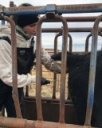
Synching cattle to be on the same estrus cycle can tighten calving windows, decrease labor spent on heat detection and breeding, and can result in increased profit potential.
Using Adjuvants in Your Pesticide Program
Katelyn Miller, Field Crops and Forage Specialist
Southwest New York Dairy, Livestock and Field Crops Program

As planting season approaches, it's a great time to review how adjuvants can improve pesticide efficacy. Read on to learn more about various types of adjuvants and important considerations for selecting one to use in your farms pesticide program.
Consideration for Alfalfa-Grass Mixtures
Katelyn Miller, Field Crops and Forage Specialist
Southwest New York Dairy, Livestock and Field Crops Program

85% of the alfalfa acreage in the Northeast is planted as a mix with grass. Learn some considerations of utilizing these mixes on your farm and grass species selection.
Where Have all the Chicks Gone? by Amy Barkley
Amy Barkley, Team Leader & Livestock Specialist
Southwest New York Dairy, Livestock and Field Crops Program

Increased demand for chicks from farmers and small flock owners following rising egg prices and flock depopulations due to bird flu means that hatcheries are having a hard time keeping up. Some tips for farms still looking to get chicks in 2023 include getting orders in ASAP, looking into new (to you!) hatcheries, and considering ordering straight run rather than sexed chicks.
Follow Best Practices to Prevent the Spread of Bird Flu
Amy Barkley, Team Leader & Livestock Specialist
Southwest New York Dairy, Livestock and Field Crops Program

We are now one year into the avian influenza outbreak, and field season is just around the corner. With this comes a higher potential exposure to and spread of this virus from wild birds to domestic birds as well as between domestic flocks. It's not time to let our guard down, as we anticipate similar rates of infection to what we saw in 2022. Please take precautions when visiting fields with migratory birds and farmsteads.
Opportunity for Silage Corn Growers: On-Farm Biodiversity Experiment

Cornell graduate student researcher is seeking New York partner farms to test how planting native flowers near silage corn fields affects biodiversity on the farm. We are also interested in how flower planting date affects biodiversity. This single-year experiment will run from May to September 2023. Participating farms will each receive $500.
Assessing (Beef) Calf Vigor, by Barry Whitworth, DVM

Following birth, beef calves should get up quickly and nurse colostrum within the first 4 hours. If calves have been through a hard calving, have poor vigor, and/or lack a strong suckling reflex, it's time for the producer to step in to help increase the calf's chances of success.
Winter forage management means business strategy

While we all get anxious during the winter months and feel as if there must be something we can do out in our fields, preparing a good strategy for the upcoming growing season may just be the most proactive thing to do.
CCE Poultry Videos Archive
Amy Barkley, Team Leader & Livestock Specialist
Southwest New York Dairy, Livestock and Field Crops Program

Over the past two years, Cornell Cooperative Extension's team of poultry experts have put together a series of videos related to raising and managing poultry. The topics range from brooding and rearing to the marketing and sales regulations around meat and eggs. These videos are part of the CCE Flock Talk series.
CCE SWNY Team Seeks Participants for Pastured Broiler Cost of Production Study f
Amy Barkley, Team Leader & Livestock Specialist
Southwest New York Dairy, Livestock and Field Crops Program

The SWNY Dairy, Livestock, and Field Crops Program is currently seeking participant farmers in Allegany, Cattaraugus, Chautauqua, Erie, and Steuben counties to take part in a 2-year study that will evaluate the true costs of production in pastured broiler enterprises. Farmers will be compensated for their time on the project. Preference will be given to slow-growth broiler producers, but all producers will be welcomed and considered. If you're interested in learning more, reach out to Amy Barkley at amb544@cornell.edu or 716-640-0844.
Free Guide Available for Planter Prep Tips

Starting a new crop is the beginning of a new year for most farms, but it's also a time when taking care of a key piece of equipment can make a big difference in spring success. The planter is a complex tool that must be precise when the weather is right to hit the field. A new free guide from Farm Progress offers information to get that planter in tip-top shape.
Best Management Practices for Field Biosecurity
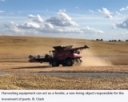
To reduce the likelihood of introducing new pests to the farm, producers should develop a biosecurity plan for their operation. Read on to learn things to consider when developing a plan for your farm.
Chick Brooding 101
Amy Barkley, Team Leader & Livestock Specialist
Southwest New York Dairy, Livestock and Field Crops Program

The weather may be cold and blustery, but it's getting to be that time where we turn our thoughts to brooding chicks for the upcoming season. Brooding chicks doesn't take much effort, but we need to make sure that we're providing the correct environment to avoid stunting or failure of the flock.
Ways to Reduce Spray Drift and Other Considerations

The importance of keeping crop protectant applications on target continues to be at the forefront of growers' minds as well as people neighboring the farms. Making sure the product stays on the intended target is critical for the health of the plant as well as those surrounding the area. As you plan for the 2023 crop season, also plan for how you're going to reduce spray drift this coming season.
Raising the Orphan Calf, by Dr. Rosslyn Biggs

Calves abandoned by their dams have dim prospects if left on their own, but your intervention can help! Outlined in this article are tips to help you give these calves the care they need for their best start in life.
Winter Manure Spreading Restrictions

Winter manure spreading can be a tricky issue depending on where you farm. In the Northeast, some states ban winter manure spreading, while others allow it but have specific rules to follow. Regulations surrounding winter manure spreading vary greatly by state, so make sure you're up to date on what you're allowed to do in New York.
Win a Grain Rescue Tube and Training for Your Local Fire Department!

When someone becomes helplessly engulfed in grain, rural firefighters are often the first and only line of defense. Unfortunately, many departments lack the specialized techniques and equipment necessary for a successful grain bin rescue. Nationwide Insurance once again is teaming up with the National Education Center for Agricultural Safety (NECAS), Peosta, Iowa, to award emergency first responders with grain rescue tubes and hands-on rescue training to help save lives.
The contest begins on January 1, 2023 at 8:00 a.m. CT and extends through April 30, 2023 at 11:59 p.m. CT. Only entries submitted during this time will be considered for the contest. To enter, describe how your local fire department or emergency rescue team and community would benefit from grain entrapment training and a rescue tube, as well as how the tube and training could be shared with nearby departments. For more information click here or contact jim.carrabba@bassett.org or call (800)343-7527 ext. 2216.
Tips for Avoiding Copper Toxicity in Sheep
Amy Barkley, Team Leader & Livestock Specialist
Southwest New York Dairy, Livestock and Field Crops Program

While a necessary nutrient, sheep have a very low tolerance threshold for copper. This article reviews some practical considerations for managing your sheep diets to avoid toxicity.
A Real Life Reminder for Farm Safety Around Animals!
Katelyn Walley, Business Management Specialist and Team Leader
Southwest New York Dairy, Livestock and Field Crops Program
When working with any type of livestock or equipment, it's key to consider safety to keep yourself, your farm family, employees, and animals safe. On average from year to year, one in every four farm accidents involve animals. Below are some farm safety reminders for working with animals on the farm.
Keeping Your Flock in Production Through the "Off Months"
Amy Barkley, Team Leader & Livestock Specialist
Southwest New York Dairy, Livestock and Field Crops Program

Egg production naturally slows as we approach winter, but there are some proven strategies to keep your flock's production up! These include daylength, hen age, hen breed, and feed and water availability.
Grain Drill Calibration

The seed delivery system in drills is not as precise as that used in planters because they use flutes or sponges to meter seed instead of seed singulation. However, drills are cost effective for establishment of close-spaced crops and can place seed at a uniform depth, provided depth-control or furrow-closing wheels when they are properly adjusted and maintained. Click here to review the process of how to calibrate a grain drill.
Plan now for better 2023 weed control

Did you achieve the level of weed control you wanted in corn in 2022? Did you prevent weeds from growing with corn early in the season? By evaluating this year's challenges and successes now, you can lay out an even better weed control strategy for 2023.
Reflecting on Tar Spot in 2022

While tar spot was first found in Pennsylvania in late 2020, its spread was limited in the commonwealth until recently. This year (2022), tar spot was found across the majority of southern PA and in western PA into the Lake Erie region. We want to emphasize that there were no reports of yield loss due to tar spot in the areas affected. Read on to learn how the pathogen survives and spreads along with possible management strategies if the disease has been identified in your area.
Weed resistance a growing problem in N.Y.

Weed control is a major concern for growers, especially considering the growing trend of herbicide resistance. Read labels carefully, be open to other techniques that can help preserve the herbicide arsenal, learn about how herbicide resistant weeds are spreading throughout NYS and how to reduce incidence of spread.
Don't Become a Statistic: Grain Bin Safety Tips

Many of the ways to increase safety when working and living around grain storage involve basic safety practices, but more education and enforcement is needed on the farm. Over two-thirds of US grain is stored on the farm without OSHA standards for safety protocols. It is up to you to keep yourself, your employees, your spouse, kids, and grandkids safe from grain bin hazards.
Cornell Meat Suite Relaunch - Is Your Profile Up to Date?

Cornell's MeatSuite.com has been upgraded with new features that make the program easier to use for both farmers and the public. Farmers are requested to update their profiles if they have one. If you're new to the program, you can create a free profile on www.meatsuite.com to share a little about your farm and to list the bulk order meats you have for sale.
No Relief in Sight for High Fertilizer Prices

If you haven't purchased fertilizer yet for 2023, don't expect much price relief between now and next spring unless commodity prices and natural gas prices come down dramatically. And that's not likely, at least at this point, according to Jason Troendle of The Fertilizer Institute.
What are mycotoxins?

Mycotoxins are toxic substances produced by fungi (mycotoxigenic fungi) on the different substrates where they grow. Mycotoxins can be toxic when inhaled, absorbed through the skin, or consumed at very low concentration levels, which means that even a few milligrams in food or feed may pose a risk for human and animal health. Read on to learn more about which crops are affected, their impact on human health, and when outbreaks occur.
How Late Can I Control Weeds in the Fall

How late can an herbicide application be made in the fall and still be effective? Here are some comments about controlling perennials and winter annual weeds.
Late Fall is Time to Winterize Your Sprayers

Now that most of the field spraying is over for the season and the weather is turning colder it's time to winterize your pesticide sprayer before it gets too cold and causes damage to sprayer components. The following are tips to guide you.
Fall 2022 Update on the Bird Flu
Amy Barkley, Team Leader & Livestock Specialist
Southwest New York Dairy, Livestock and Field Crops Program

Highly Pathogenic Avian Influenza (HPAI) is still a present threat to NYS commercial and backyard poultry producers as cases across the Northeast increase. New York has seen numerous wild bird positives across the state in the past month, with surrounding states having positive cases in commercial and backyard flocks.
Herbicide Supplies and Storage during the Winter

With volatile supply chain issues, it may make sense to purchase bulk inventory of herbicides and/or other pesticides. However, you must keep in mind appropriate storage parameters, namely issues regarding freezing of pesticide products. Read on to learn how to store these products safely for the upcoming winter season.
Spotted Lanternfly PSA Video Released by CCE

Are you looking to understand and/or share more about the invasive Spotted Lanternfly in NYS? Check out this sharable video, which outlines what it looks like, how it affects us, and how to report sightings to NYS Ag and Markets. An infestation has recently been confirmed in Buffalo.
A Representative Soil Sample Makes All The Difference
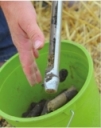
"An acre of soil to a 6-inch depth weighs about 1,000 tons, yet less than 1 ounce of soil is used for each test in the laboratory." That number is quite staggering. Therefore, pulling a high-quality soil sample is important every time we hit the field. Here are a few tips for accomplishing just that to round out a successful crop season.
Soil Holds the Cards

Soil testing is the base for determining management decisions. With the current markets for all crop nutrients, don't play a guessing game with the most important input cost out there. The crop this year is going to be different than last year when it comes to yield and what it will take to get that yield. So don't expect similar nutrient levels as last year. The pressure to buy fertilizer gets to be sooner and sooner every year, so soil testing provides the information needed quickly.
Don't Leave Alfalfa Leaves in the Dust

Fall is always a good time to focus on leaves. In fact, people drive hundreds of miles to various states to view the collage of leaf colors, while for many of us, autumn brings an unwelcomed leaf-raking ritual. With so much attention on leaves, this might also be a good time of year to view and evaluate your harvested alfalfa to assess how much leaf retention actually occurred over the summer, or if too many leaves are being left in the dust by the baler or chopper.
Silo Gases: The Hidden Danger
We have all heard the old saying, "a little knowledge is a dangerous thing." This is true of many aspects of farming, and in particular with silo gases. In fact, where these gases are involved we ought to add that "No knowledge can be fatal." Although injuries and fatalities caused by silo gases may not occur as often as other kinds of farm incidents, they are and will continue to be a very real hazard for as long as silage remains a common livestock feed. Because of this it is important that every farm worker understand the dangers associated with silo gases and how to deal with them.
Did the Breeding Take? Pregnancy Verification Options for Your Momma Cows
Amy Barkley, Team Leader & Livestock Specialist
Southwest New York Dairy, Livestock and Field Crops Program

Cows that are able to produce a calf a year are going to be the most efficient for your beef enterprise vs those that either don't take or require multiple breedings annually. Checking for open cows early will help you make culling decisions, and can be done via rectal palpation, ultrasound, or blood test.
Fall Weed Control Options
Fall is an ideal time to control many of our troublesome weeds present in fields after harvest. It is easier to control many of these weeds in the fall rather than waiting until spring. A fall burndown application will not always eliminate the need for a spring burndown application prior to planting but provides a broader spring burndown application window.
It's Go Time for Winter Cereals

Winter annual forages are a valued feed source across the United States, but this year they will offer extra benefits to those areas that have been stricken with drought. The beauty of winter annuals is that they work just about anywhere, assuming there is sufficient moisture. Read on for tips on how to successfully utilize these crops.
The round bale conundrum

One of biggest advantages of large round bales is that they can be stored outside with minimal dry matter losses. One of the biggest disadvantages is that they can be stored outside and suffer significant dry matter losses. There lies the conundrum. Read on to learn ways to limit your losses when you don't have a barn to store round bales.
We are in Deer Worm Season: An update from Dr. tatiana Stanton

At this time of year, small ruminant producers need to watch out for deer worm infections, which increase sharply now compared to other seasons. In this article, Dr. tatiana Stanton reviews how to be prepared.
Herbicide Resistance Survey

With the recent documentation of evolved herbicide resistance in New York, Cornell is looking to get a better feel for the current "state of the state" with respect to herbicide performance and failure. If you think you have any herbicide resistant weeds, take this survey to help Cornell weed scientists plan future research and extension projects.
Inventorying Forage
With low forage yields, knowing what you have in inventory is critical to help plan for how to best manage your feed. Utilize this article and its sources to help make sound feed management decisions in your operation for the upcoming year.
Record Silking/Tasseling Dates for Corn Fields
Tracking Growing Degree Days (GDD's) is an effective way to monitor the progress of a corn crop and in recent years several online tools for tracking GDD's have been developed. This article will provide links to the Climate Smart Farming GDD tool along with an instructional video from Dr. Kitty O'Neil with the North Country Regional Ag Team to estimate GDD accumulation from planting. With this tool you can also enter silking/tasseling date in the planting box to track accumulation from that date.
Staying Safe Around Beef Cattle

Beef cattle are large animals that require you to be cautious while working with them, regardless of your history with the herd. Rich Taber of CCE Chenango shares his experience and tips for staying safe around them.
Straw: To Bale or Not to Bale?

With fertilizer prices at near record levels the nutrients removed by baling straw is much more significant than it was in previous years. What's your breakeven point for wheat straw?
Resource for Farmers Selling Meat Breaks Down Yields and Cuts by Species

This resource, compiled by Betsy Hodge of CCE St. Lawrence, outlines the amount of meat that customers can expect from each of the major livestock species by both live and hanging weights. It also breaks down the approximate pounds of different cuts that a consumer can expect to get back from a half or whole animal.
Spotted Lanternfly has Been Found in SWNY- Report Them to Help Slow the Outbreak
Amy Barkley, Team Leader & Livestock Specialist
Southwest New York Dairy, Livestock and Field Crops Program

Spotted Lanternfly, an invasive pest that has a huge appetite for grape vines, fruit trees, maple trees, and other plants, has been sighted in SWNY. Help us delay the spread of this invasive pest by photographing them, killing any that you see, and reporting them to your local CCE office.
Corn Leaf Diseases to Watch For in 2022

Depending on the spring weather and past experience, there are leaf diseases which might develop and dominate in July and August. Click here to learn about which diseases you should watch for in your corn crop.
Dicamba Cut-Off Date Reminder
June 30, 2022 marks the official cutoff date for the over the top use of XtendiMax, Engenia and Tavium on Xtend or XtendFlex traited soybean in New York. Now the question that will be asked by growers is "I've planted Xtend soybeans; now what are my options?".
10 Tips for Producing Baleage

More to Hay Moisture than Fire Risk

Heat damage and spontaneous combustion risks should always be at the forefront of hay moisture considerations, however, over drying can diminish forage quality. Focusing on baling at optimal moisture levels might be one way forage producers can improve their forage quality.
Myth Busting 8 Common Beliefs About Cover Crops

Dealing with Marek's Disease in Chickens
Amy Barkley, Team Leader & Livestock Specialist
Southwest New York Dairy, Livestock and Field Crops Program

Marek's Disease can be devastating in flocks and is one of the most common flock illnesses. However, with attention to flock health and vaccination of new arrivals, it can be easily managed.
New York State Farm Directory launching in June 2022

From our friends at Cornell CALS
As part of Cornell Cooperative Extension's role in strengthening New York State agriculture, we are helping to spread word of the New York State Department of Agriculture and Markets' plans to launch a statewide online Farm Directory.
So, What Adds Value to a Beef Calf?
Amy Barkley, Team Leader & Livestock Specialist
Southwest New York Dairy, Livestock and Field Crops Program

Pre-conditioning through castration, vaccinations, weaning, and deworming can all add value to a calf, while providing a robust animal to buyers for their finishing stages of production.
Bottle Feeding Chart for Goat Kids

This chart from the university of Idaho outlines kid weight, the percentage of bodyweight that you're targeting to feed, and what the daily feeding amount should be. It's a handy reference to hang in the barn!
Dung Beetles are our Partners in Pasture Management

Dung beetles are small invertebrates that help recycle manure and perform other essential duties related to pasture health. If populations are robust enough, they can even aid in the reduction of horn and face flies, though these populations are sensitive to feed-though insecticides.
Managing Pastures with High Fertilizer Prices and Drought, by Paul Beck

While the Northeast isn't in a drought, it hasn't escaped the high fertilizer prices. Paul Beck, with Oklahoma State Extension, shares the give-and-take that comes with making pasture and hayfield fertilization decisions.
Managing Predation in Poultry Flocks
Amy Barkley, Team Leader & Livestock Specialist
Southwest New York Dairy, Livestock and Field Crops Program

It's the time of year where everything is waking up, including predators. Spring is when many of our trouble species are having young, increasing the feeding need. This article explores ways to keep your poultry safe.
USDA AMS Meat and Poultry Processing Expansion Program Grant OPEN

The Meat and Poultry Processing Expansion Program (MPPEP) provides grants to help eligible processors expand their capacity. Grants are capped at $25M or 20% of the total project costs. Applications are due by May 11, 2022.
Announcement of Fowl Show Ban in NYS - Will Re-Evaluate in Late May

With cases of Highly Pathogenic Avian Influenza increasing in NYS, Commissioner Ball has issued an order to ban all live fowl shows and exhibitions to help stop the spread. The situation will be re-revaluated at the end of May prior to the upcoming fair season.
2022 Cornell Sheep Shearer List Now Available

The 2022 Cornell list of sheep shearers is now available. While all shearers on this list work with sheep, many work with other species.
SUNY Cobleskill Announces Openings for 2022 Beef Processing Class

SUNY Cobleskill announces openings for a comprehensive multi-day workshop that will teach beef producers to maximize their marketing yield, and understand the regulations surrounding beef processing. This in-person course will be held from May 18 - 20, 2022.
SUNY Cobleskill Announces Openings for Meat Processing and Food Safety Class

SUNY Cobleskill is offering intensive, basic training certification in whole carcass utilization, equipment use, and sanitation within federal compliance. The course will be in-person, Monday through Friday from September 12th - October 7th, 2022.
Study Reviewing Point-of-Sale (POS) Software and Marketing at Farmer's Markets

New POS systems present opportunities for farmer's market vendors to improve sales. Cornell researchers are collecting data using POS with NY farms selling meat, fruits, vegetables, fresh cut flowers and mushrooms in direct-to-consumer channels. The project seeks farms that sell their own products at farmers markets, farm stores, and staffed farm stands to participate.
When it the Right Time to Castrate Bulls by Jeff Robe

Castration of bulls destined for beef production is seen as a value-added practice that is most impactful and least stressful for the animal earlier in life and well before weaning. When looking into the value of castration, consider that heavier weight bull discounts at market can average $6 - $12/cwt ($30-$60/head).
Tips for Successful Frost Seeding
Amy Barkley, Team Leader & Livestock Specialist
Southwest New York Dairy, Livestock and Field Crops Program

Frost seeding is a low input and low disturbance method of improving pastures and hayfields. If potential pitfalls are addressed prior to seed getting on the ground, it can result in a more productive stand.
HPAI Found in NYS on 2/19/22 - Suffolk County
Amy Barkley, Team Leader & Livestock Specialist
Southwest New York Dairy, Livestock and Field Crops Program

With Highly Pathogenic Avian Influenza now in New York State, it's important to review your biosecurity plans, remain vigilant, and be prepared to contact a veterinarian or state diagnostic lab if you suspect that you may have the virus.
A Little Preparation Makes a Successful Shearing Day
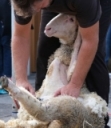
Shearing season can be stressful for shearers and shepherds alike, but it doesn't have to be! This article reviews what farms can do months, weeks, and days in advance of shearing to help make sure that shearing day goes smoothly.
Overview of the Cold Milk Lambar System used at Cornell University

A lambar system is one method of decreasing labor costs to artificially rear lambs and kids. This article reviews how to set up a low-cost system and prepare the lambs and kids for success.
Bull to Female Ratios - Preparing for Breeding Season, by Mark Johnson

Achieving a tighter calving window and earlier breeding results in older, heavier calves at weaning. We can achieve this in part by having a proper ratio of bulls to cows, which depends in part on bull age.
Hardware Disease of Cattle, by Dr. Bonnard Moseley

Cattle have a habit of accidentally consuming nails, wire, and other bits of metal in their day-to-day activities. Using a preventative such as a magnet can help reduce potentially expensive and/or fatal injury to the reticulum and heart from metal fragments.
Poultry Producers: Be on the Lookout for Highly Pathogenic Avian Influenza
Amy Barkley, Team Leader & Livestock Specialist
Southwest New York Dairy, Livestock and Field Crops Program
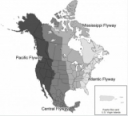
Nearly 140 cases of the highly pathogenic Avian Influenza strain have been identified in the U.S. in wild bird populations, but the virus can easily spread to domestic poultry. Keep your eye out for general respiratory disease symptoms and high death rates and be prepared to report any whole flock illness that looks suspicious.
The Pros and Cons of Seeding Pasture with Big Box Store Mixes
Amy Barkley, Team Leader & Livestock Specialist
Southwest New York Dairy, Livestock and Field Crops Program

This year, pasture seed will be in short supply. However, it's not a good idea to plant a mix that you happen across at your local big box or garden supply store. This article shares why.
Dealing with Frostbite on Newborn Lambs and Kids by Dr. tatiana Stanton

While frostbite is common in the Northeast, it's typically not life-threatening. However, it can be serious, affecting ears, feet, and tails of newborns as well as teats of does and ewes in milk. This article reviews prevention, symptoms, and management of frostbite.
Cold Temperature Management for Pigs

For pigs that are kept outside or in non-heated shelters, managing heat loss can be a struggle. Pigs that can't keep warm have an increased number of health problems, reduced growth rates, and decreased reproductive performance. Understanding how pigs tolerate and adapt to cold temperatures can help us alter our management schemes to best meet their needs.
ASI's 2022 Developing Shearer and Mentor Grant Application Now Available
Amy Barkley, Team Leader & Livestock Specialist
Southwest New York Dairy, Livestock and Field Crops Program

Beginning in 2022, ASI will grant a total of $15,000 with the goal of helping develop beginner and intermediate shearers and keeping them in the industry. Applications are due by January 15th. Learn more about the Shearer and Mentor Grant here:
CCE Resource List for Lambing and Kidding
Amy Barkley, Team Leader & Livestock Specialist
Southwest New York Dairy, Livestock and Field Crops Program

Over the years, CCE has developed a series of picture-based and text-based resource guides for farms entering lambing and kidding season. These have been compiled from our Cornell websites, putting them all in one place and making them easier to find.
Spotted Lanternfly is in NYS - Please stay on the lookout for this pest!
Amy Barkley, Team Leader & Livestock Specialist
Southwest New York Dairy, Livestock and Field Crops Program
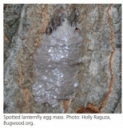
The Spotted Lanternfly is in NYS, and tends to destroy vineyards, hopyards, orchards, and forests. If you see this insect or it's egg masses in winter (which look like smears of concrete), please contact NYS Ag and Markets or your local extension agent.
Vaccine Handling and Storage, by Bob LeValley
Amy Barkley, Team Leader & Livestock Specialist
Southwest New York Dairy, Livestock and Field Crops Program

Proper handling and storage of vaccines both while that vaccine is in storage and is vital to their effectiveness. Without proper measures in place, the quality may diminish rapidly and/or the active ingredients may deactivate.
Screening for Diseases when Buying Goats and Sheep
Amy Barkley, Team Leader & Livestock Specialist
Southwest New York Dairy, Livestock and Field Crops Program

When bringing new animals into the herd of flock, there is always a potential to introduce diseases. Dr. tatiana Stanton describes common diseases to look out for, and details how to care for any new arrivals to the farm.
Tips on Grazing After a Frost or Freeze
Amy Barkley, Team Leader & Livestock Specialist
Southwest New York Dairy, Livestock and Field Crops Program

Some cold-damaged forages are fine to feed, but others have potential bloat and toxicity concerns. Sorghum, sudangrass, sorghum-sudan hybrids, Johnsongrass, and alfalfa are all species need a little extra management to graze safely.
Upcoming Online Courses through CCE - Getting Started with Livestock and Grazing
Amy Barkley, Team Leader & Livestock Specialist
Southwest New York Dairy, Livestock and Field Crops Program
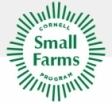
Whether
you're considering starting a poultry, swine, cattle, or sheep enterprise, or
are looking to get started with or improve grazing strategies for your farm,
the Cornell Small Farms Program's online courses can provide the information
and support you need to take the next step. Registration is now open for classes starting in November!
Grant Seekers: SAM & DUNS: Register Your Business Now!
Amy Barkley, Team Leader & Livestock Specialist
Southwest New York Dairy, Livestock and Field Crops Program

SAM & DUNS registrations are free and needed to apply for federal grant opportunities. While it takes minutes to apply, it may take weeks to receive your number. Registering your farm or business now means that you'll be prepared for grant opportunities that may come your way.
Is Your Farm Ready to Prevent a Foreign Animal Disease?
Amy Barkley, Team Leader & Livestock Specialist
Southwest New York Dairy, Livestock and Field Crops Program

Foreign animal diseases can be devastating for farmers because there are usually no vaccines available, and animals' immune systems are na´ve. African Swine Fever (ASF), a highly pathogenic and deadly disease, has recently been reported in the Dominican Republic. This timely article shares what can happen during a disease outbreak and steps you can take to keep your herds and flocks safe.
Raising Prices on Meat, a Pep Talk
Amy Barkley, Team Leader & Livestock Specialist
Southwest New York Dairy, Livestock and Field Crops Program

A team of Cornell researchers conducted a price comparison study across meats sold from small farms and grocery stores. The results of their findings are included in this article, which also addresses how farmers can challenge their assumptions when considering raising prices for their locally produced meats.
Foot Rot in Small Ruminants
Amy Barkley, Team Leader & Livestock Specialist
Southwest New York Dairy, Livestock and Field Crops Program

While foot rot is sometimes considered a disease of cattle, it too affects sheep and goats in NYS, though goats show fewer classic symptoms than sheep. This article by Dr. tatiana Stanton of Cornell University details how to identify and eliminate foot rots from herds and flocks.
Cornell Cooperative Extension Farmer School Tax Series
Katelyn Walley, Business Management Specialist and Team Leader
Southwest New York Dairy, Livestock and Field Crops Program
Cornell Cooperative Extension's Farmer Tax School: An educational series from Cornell Cooperative Extension Farm Business Management Specialists offering courses designed to inform and empower farm managers to better understand their tax obligations, management strategies, and improve farm profitability. This consists of four courses offered October 2021 - January 2022. For more information, visit tinyurl.com/ccetaxschool.
How you Administer Injections Matters
Amy Barkley, Team Leader & Livestock Specialist
Southwest New York Dairy, Livestock and Field Crops Program
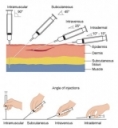
Injections are a necessary part of livestock management. Not only is each formulated for a different part of the body, but they're also formulated to be injected into a specific layer of tissue (skin vs muscle vs vein). This article and graphic illustrate the proper angles for injection administration.
Management Practices to Add Value to Beef Calves
Amy Barkley, Team Leader & Livestock Specialist
Southwest New York Dairy, Livestock and Field Crops Program

Pre-conditioning calves may take additional effort, but integrating relatively simple practices into a management program can result in higher prices at market and a leg up if those animals are remaining on the farm to be finished. Learn more in this article from Mark Johnson and Paul Beck from Oklahoma State University.
Cause, Prevention, and Treatment of Foot Rot in Cattle
Amy Barkley, Team Leader & Livestock Specialist
Southwest New York Dairy, Livestock and Field Crops Program

The solidity of cattle's feet is essential for proper health, gains, and performance, thereby reducing the potential for economic loss and added veterinary bills. Foot rot is an infectious disease that is treatable if caught early enough and properly managed, with most animals making a full recovery. This article by Oklahoma State University shares clinical signs, prevention, and treatment options.
Raising Holstein and Crossbred Steers
Amy Barkley, Team Leader & Livestock Specialist
Southwest New York Dairy, Livestock and Field Crops Program

Beef steers, whether purebred Holstein or Holstein crossed with beef genetics, are a co-product of milk production. Although both raised for beef, these animals grow differently and finish differently than pure beef breed steers. Because of this, it's important to understand how these animals grow and how genetics impact their final carcass yield and quality.
New Report Summarizes NYS Meat Processor Needs and Perspectives
Amy Barkley, Team Leader & Livestock Specialist
Southwest New York Dairy, Livestock and Field Crops Program

In Fall 2020, CCE interviewed all NYS meat processing facilities to gain an understanding of businesses' interest in expanding or upgrading to a higher level of inspection, barriers to sustainability and growth, and what types of support they needed. Read the full report here.
Property Assessment Grievance Day is Coming, Are You Ready? by NY Farm Bureau
Amy Barkley, Team Leader & Livestock Specialist
Southwest New York Dairy, Livestock and Field Crops Program

Property Assessment Grievance Day occurs once a year, usually on the 4th Tuesday in May (though the date varies by municipality), and provides landowners an opportunity to review and contest their assessments. Assessments can be reviewed on your local municipality's website, and discrepancies can be brought up with your local assessor.
Spring Weed Control in Grass Hay and Pastures by Dwight Lingenfelter - PSU
Joshua Putman, Field Crops and Forage Specialist
Southwest New York Dairy, Livestock and Field Crops Program

Over the past few weeks, we have received calls in the SWNY region pertaining to weed control options in grass hay and pastures. Spring weed control timing is critical and there are several options to consider. Remember, once weeds are in the "seed setting" stage, a herbicide application is no longer effective. Full article can be found here.
Grazing Livestock and Mud Season
Amy Barkley, Team Leader & Livestock Specialist
Southwest New York Dairy, Livestock and Field Crops Program

The early part of the grazing season can be challenging to manage when wet pastures are part of the equation. Amy Barkley discusses management tactics to preserve pasture quality while getting the most out of the early grazing season.
Benefits of Estrus Synchronization and Artificial Insemination, by Mark Johnson
Amy Barkley, Team Leader & Livestock Specialist
Southwest New York Dairy, Livestock and Field Crops Program

Tightening the window of your beef cattle breeding season to 60-75 days can result in an earlier, heavier, more uniform calf crop. Additionally, management can be easier when all cattle are at the same stage of reproduction.
Checking Insect Traps in the Snow - What we have so far?
Joshua Putman, Field Crops and Forage Specialist
Southwest New York Dairy, Livestock and Field Crops Program

As of this week, we have our first moth captures in SWNY. Two black cutworm moths were captured in Steuben County and no moths were collected from Cattaraugus County. As temperatures increase and the spring progresses, be on the lookout for these yield robbing pests.
Small Flock Turkey Production, by Penn State Poultry Extension
Amy Barkley, Team Leader & Livestock Specialist
Southwest New York Dairy, Livestock and Field Crops Program

Looking to add a small-scale turkey flock to your farming enterprise? This article provides information and a series of excellent resources to get you started.
Keeping the First Calf Heifers on Track by Parker Henley, OK State
Amy Barkley, Team Leader & Livestock Specialist
Southwest New York Dairy, Livestock and Field Crops Program

Heifer development is costly, but necessary for cow-calf operations. Recommendations for breeding based on maturity of first calf heifers are discussed in this article.
Selection for Calving Ease
Amy Barkley, Team Leader & Livestock Specialist
Southwest New York Dairy, Livestock and Field Crops Program

One way to manage dystocias in a beef herd is to use genetic prediction to select for bulls that have good scores around calving ease. In this article, Mark Z. Johnson, Oklahoma State University Extension Beef Cattle Breeding Specialist, discusses how to interpret EPDs for success in the next calving season.
Webinar Recordings for Beef Producers Now Available
Amy Barkley, Team Leader & Livestock Specialist
Southwest New York Dairy, Livestock and Field Crops Program

Cornell's Livestock Program Work Team has completed it's three-webinar series on the three major beef operations: "Insights to the Cow/Calf Enterprise", "Introduction to Stocker Cattle", and "Beef Finishing Programs". If you missed any of these three webinars, you can watch them for free. You can find more details in this article.
Dry Manure Spreader Calibration
Amy Barkley, Team Leader & Livestock Specialist
Southwest New York Dairy, Livestock and Field Crops Program

Manure is an excellent nutrient resources for crops and pastures, and the proper calibration of a spreader will help to ensure an even distribution of nutrients consistent with cropping recommendations and your nutrient management plan. This article explores two methods of calibrating a dry manure spreader.
Opportunity: Cornell By-the-Cut Meat Pricing and Sales Research Project
Amy Barkley, Team Leader & Livestock Specialist
Southwest New York Dairy, Livestock and Field Crops Program
Cornell University is researching direct-to-consumer sales of locally-raised meat products sold by-the-cut to help meat producers improve profitability. The project team is looking for farm participants. Participation includes collecting sales data with Point-of-Sale (POS) online sales software, like Square, and using Cornell's new online Meat Price Calculator.
The Pigweed Roadshow is on!
Joshua Putman, Field Crops and Forage Specialist
Southwest New York Dairy, Livestock and Field Crops Program
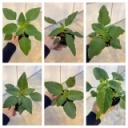
Interested in learning about problematic weeds in the state? We are looking for locations willing to host us as we will be joined by Dr. Lynn Sosnoskie and her weeds, to learn about different identification characteristics among the pigweed species here in NY. Can you correctly identify all 6 weeds in this photo?
Beware the Straight Run Chicks
Amy Barkley, Team Leader & Livestock Specialist
Southwest New York Dairy, Livestock and Field Crops Program

Chicks are hot again this year, and heritage breed pullet chicks can be hard to come by. In this article, Amy Barkley and Jason Detzel (Livestock Educator, CCE Ulster County) discuss recent observations of the chick market and share some things that should be considered before purchasing straight run chicks.
Research Finds Multiple Herbicide-Resistant Marestail is Present in New York
Joshua Putman, Field Crops and Forage Specialist
Southwest New York Dairy, Livestock and Field Crops Program

Thirty populations of marestail (horseweed) were collected in the fall of 2020 and are being screened for resistance to commonly used herbicides. Of the 30 collected, 27 appear to be resistant to glyphosate (Roundup) and 28 populations appear to be resistant to cloransulam herbicide, an ALS-inhibitor. This indicates that we have multiple-resistance in NY. It is also suspected that 4 of these 30 samples may be resistant to paraquat (Gramoxone) herbicide. The screening efforts will continue to evaluate the effect of products like 2,4-D and dicamba, Liberty, and PPO-inhibiting herbicides like Reflex and Sharpen.
Thinking of Using CCE's MeatSuite to Sell Bulk Meats? Here's How to Get Started
Amy Barkley, Team Leader & Livestock Specialist
Southwest New York Dairy, Livestock and Field Crops Program

Meatsuite.com is a Cornell-managed online platform which connects local farms selling bulk meats to potential customers. This article shares some information on how to get started using the program.
Weed Control in Wheat and Nitrogen Carrier Issues
Joshua Putman, Field Crops and Forage Specialist
Southwest New York Dairy, Livestock and Field Crops Program

Populations of winter annual weeds will become more prevalent in late March/early April and can compete with wheat and barley and slow the rate of crop development potentially reducing yield. If winter annual weeds like common chickweed, henbit, purple deadnettle, marestail/horseweed, and others emerge with the small grain and are left unchecked, the potential impact on yield could be great.
Certain herbicides can be applied in different nitrogen fertilizer carriers, but timing is critical. Article written by Dwight Lingenfelter with Penn State University.
Spring Pasture Management: Where Do I Start?
Amy Barkley, Team Leader & Livestock Specialist
Southwest New York Dairy, Livestock and Field Crops Program

It's time to get out in the pastures to check the status of soil fertility and winter damage in addition to developing a grazing management plan for the coming grazing season. Penn State Extension educators, Justin Brackenrich and Leanna Duppstadt, share how to evaluate these items and share considerations for preparing pastures for the year ahead.
Nitrogen Applications Being Made to Winter Cereals - How much should you apply?
Joshua Putman, Field Crops and Forage Specialist
Southwest New York Dairy, Livestock and Field Crops Program

Winter cereals like wheat, should have some nitrogen (N), most of the phosphorus (P), and possibly some potassium (K) in the fertilizer band at planting; soil test results should be analyzed before making a decision about P and K application amounts. With recent cool temperatures, spring nitrogen applications are being made across Western NY as growers are able to get across the fields efficiently. When attempting to achieve near-maximum yields of wheat and when diseases can be controlled, the nitrogen rates can be increased to 80 to 90 pounds per acre. The full article on fertilizer rates for winter cereal crops can be found here.
New Self-Paced On-Farm Poultry Processing Course Available
Amy Barkley, Team Leader & Livestock Specialist
Southwest New York Dairy, Livestock and Field Crops Program

This Cornell Small Farms course offers detailed videos and lessons on food safety, processing and humane techniques for dispatching birds. Successfully completing this course will earn a Certificate of Completion. This certificate may be an acceptable option for farm insurance providers that request a training before underwriting a policy for your poultry processing operation.
The Handy Bt-Trait Table for U.S. Corn Production
Joshua Putman, Field Crops and Forage Specialist
Southwest New York Dairy, Livestock and Field Crops Program
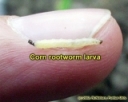
2021 marks the 25th year of commercialization of Bt corn in the United States. The first Bt corn hybrids helped producers control European corn borer, but Bt has come a long way since then. Bt hybrids are now planted on greater than 80% of U.S. corn acres. The benefits of widespread use of Bt hybrids include a reduction in corn borer in the landscape (benefitting conventional corn & vegetables too), and an overall reduction in insecticide use. Producers in SWNY are reviewing seed catalogs to purchase the best corn hybrids for their operation. Some acres in the region are continuous corn and would warrant the need for protection against certain pests such as corn rootworm. This PDF document provides information about the trade names, primary insect targets, and herbicide tolerances for each product. If you have questions about corn traits or placement, contact Josh Putman at 716-490-5572 or jap473@cornell.edu.
Replace Missing PTO Shields at Discount Prices
Amy Barkley, Team Leader & Livestock Specialist
Southwest New York Dairy, Livestock and Field Crops Program

PTO shields are not often thought about, and when they are, it's usually in a negative light. However, they are an important part of a farm's safety plan. PTOs are dangerous and can result in catastrophic injury. Installing a shield is an added barrier of protection between man and machine. A program offered through the New York Center for Agriculture Medicine and Health (NYCAMH) can provide replacement PTO shields at substantially reduced cost. These parts cost between $59 - $83 through the program and can be ordered at https://www.nycamh.org/program...
Liberty-resistant Palmer amaranth confirmed in Arkansas
Joshua Putman, Field Crops and Forage Specialist
Southwest New York Dairy, Livestock and Field Crops Program

Researchers from the University of Arkansas have identified Palmer amaranth populations that survived several applications of Liberty (glufosinate) Herbicide. Seed was collected and tested in the greenhouse showing a resistance of 16 times the typical field use rate. These findings represent the first documented case of a broadleaf resistance to Liberty Herbicide in the world. Liberty link traits are an additional tool to help corn and soybean producers control problematic weeds like Palmer amaranth, waterhemp, and marestail. Palmer amaranth is now present in 3 counties in New York State, one of which is in Southwest NY. Seed was collected from these populations in the fall of 2020 and are being tested for resistance to our commonly used herbicides. Stay tuned as we conduct research on these NY populations. Full article from the University of Arkansas can be found here.
Care of Pigs from Farrowing to Weaning, by John Rea
Amy Barkley, Team Leader & Livestock Specialist
Southwest New York Dairy, Livestock and Field Crops Program

On average, two piglets from every litter are lost during the period from birth to weaning, which has been repeatedly linked to poor management. Fortunately, management can continuously improve to help reduce production losses. This article by John Rea of the University of Missouri delves into the specifics of this most critical period in the life of a pig, starting with preparations for farrowing and ending at weaning.
Dystocia in Small Ruminants
Amy Barkley, Team Leader & Livestock Specialist
Southwest New York Dairy, Livestock and Field Crops Program
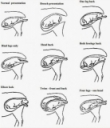
It's lambing and kidding time for those early season babies. In an ideal world, does and ewes are able to produce a lamb or kid within about 45-60 minutes of beginning active labor without much difficulty. However, it is common for up to 5% have some sort of trouble. Dystocia can be caused by malpresentation of the fetus, which, depending on the severity, can be addressed by a flock or herd caretaker. This article shares some of the common dystocias in small ruminants, their causes, and how to approach aiding a doe or ewe.
Planting dicamba-tolerant soybeans in 2021? Options and changes to the labels
Joshua Putman, Field Crops and Forage Specialist
Southwest New York Dairy, Livestock and Field Crops Program

-Written by Mike Hunter, Field Crop Specialist with the North Country Regional Ag Team-
Are you planting dicamba-tolerant (Xtend or XtendFlex Technology) soybeans in 2021? If so, one of the tools in the weed control toolbox will be the option to use one of the three registered dicamba herbicides for use on Xtend or XtendFlex soybeans. In October 2020, the EPA approved a five year registration of XtendiMax and Engenia herbicides. It also extended the registration of Tavium herbicide. Xtendimax, Engenia and Tavium are currently the only dicamba products registered for over-the-top use in dicamba-tolerant soybeans in New York State. There are several updates and changes to the New York labels that can be found on the Cornell Field Crops Blogs. If you have questions about soybean production in 2021, contact Josh Putman at 716-490-5572 or jap473@cornell.edu
Do you have Alfalfa Snout Beetle on your farm?
Joshua Putman, Field Crops and Forage Specialist
Southwest New York Dairy, Livestock and Field Crops Program

-Article written by Dr. Elson Shields, Department of Entomology, Cornell University-
Alfalfa Snout Beetle is a significant problem in Northern NY. When alfalfa snout beetle (ASB) becomes fully established on your farm, its presence cost you $300-$600 per cow annually. The higher producing dairies are hit harder than the lower producing dairies because the higher producing dairies are more reliant on their production of high quality alfalfa and grass forage to maintain their high milk production. This is an unbelievable amount of loss caused by ASB and is ignored by many in the northern New York Agribusiness community. ASB damage is frequently missed and stand loss is often blamed on winter kill. It has not been confirmed in SWNY, but if you feel your alfalfa stands are diminishing quickly, it might be time to look deeper. The full article can be found on Field Crop News.
Lambing Time Management by Dr. Scott Greiner
Amy Barkley, Team Leader & Livestock Specialist
Southwest New York Dairy, Livestock and Field Crops Program

Farms across the Northeast are beginning to get into the thick of the first main lambing season of the year. This article, by Dr. Scott Greiner of Virginia Tech, shares some management reminders to help ewes and lambs get off to their best start. These tips include making frequent visits to the lambing barn, moving ewes to a jug after lambing, and ensuring lambs are receiving adequate colostrum.
Grain Handling and Storage Safety
Joshua Putman, Field Crops and Forage Specialist
Southwest New York Dairy, Livestock and Field Crops Program
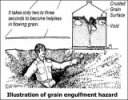
Grain facilities are locations that receive, handle, store, process, and ship bulk agricultural commodities like corn, soybeans, wheat, and oats. In New York, these facilities can be quite large and can handle large quantities of grain products. Additionally, many agricultural producers have their own grain facilities for on-farm storage. The grain handling industry is hazardous because workers can be exposed to serious and life-threatening dangers. Suffocation is the number one cause of death in grain storage bins. There are things that can be done to reduce these hazards. Information and resources can be found on the United States Department of Labor Occupational Safety and Health Administration (OSHA) website.
Blood Sampling in Sheep
Amy Barkley, Team Leader & Livestock Specialist
Southwest New York Dairy, Livestock and Field Crops Program
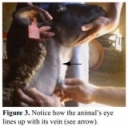
Blood draws on goats and sheep are common. While most of us leave drawing blood to the herd or flock veterinarian, there are some instances where it can make sense for farmers to draw blood themselves. Blood can be used to test for pregnancy, genetic markers, or diseases. This article by Purdue University Extension shares step-by-step instructions for gathering equipment, safe restraint, and different methods for preparing the site, drawing blood, and considerations for handling and storing the samples.
Safety for Supplementing Heat to Livestock
Amy Barkley, Team Leader & Livestock Specialist
Southwest New York Dairy, Livestock and Field Crops Program

When it becomes necessary to provide supplemental heat to livestock, management of the barn and heat sources is important to ensure building and livestock safety. The selection of an appropriate heat source in addition to how that source is managed can help prevent animal injury and potentially devastating barn fires. This information, as well as emergency preparedness tips, can be found in this article.
Soybean Cyst Nematode Keeps Spreading, Economic Losses Increasing
Joshua Putman, Field Crops and Forage Specialist
Southwest New York Dairy, Livestock and Field Crops Program
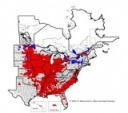
-Information provided my Julianne Johnston, The SCN Coalition-
"In just the past three years, soybean cyst nematode (SCN) has spread to 55 new U.S. counties in 11 states," says Dr. Greg Tylka, Iowa State University (ISU) nematologist and co-leader of The SCN Coalition. "SCN is now widespread in New York," says Dr. Gary Bergstrom. "Soybean growers are fortunate that in most fields where SCN has been detected, population densities are low, although it's concerning that a few counties had higher numbers." Growers are asking questions about SCN-resistant varieties, nematicide seed treatments, and soil testing for SCN. In 2020, researchers concluded that from 1996 to 2016, SCN caused yield losses of $32 billion dollars; averaging $1.5 billion annually. Research and sampling will be continued into the 2021 growing season in SWNY and throughout the state.
Meet our New Faculty Member: Dr. Louis Longchamps
Joshua Putman, Field Crops and Forage Specialist
Southwest New York Dairy, Livestock and Field Crops Program

Dr. Longchamps is an assistant professor in the Soil and Crop Science section of the School of Integrative Plant Science. His academic focus is on precision agriculture, digital agronomy, on-farm experimentation, and soil and crop improvement. He has a Ph.D. in weed science where he focused on weed distribution in corn fields in order to assess the best approach for weed spot spraying technologies. His postdoctoral studies worked to improve nutrient, water, and seed use efficiency by soil mapping and remote sensing. Dr. Longchamps experience will pair nicely with current and new faculty at Cornell University.
Herbicide Resistance Update on Marestail
Joshua Putman, Field Crops and Forage Specialist
Southwest New York Dairy, Livestock and Field Crops Program

Horticulture Weed Scientist, Dr. Lynn Sosnoskie, has been conducting some interesting research over the past few months. Extension specialists from all around the state collected and submitted weed specimens last fall for herbicide-resistance testing to better understand the best management practices for these weeds in field crops. We now have preliminary results from the first screening on horseweed aka marestail. Thirty populations have been tested so far and, it appears, that 27 out of 30 have resistance to the field-use rate of glyphosate (Roundup). Testing will continue with different chemistries so that we can provide growers with proper control measures. Join us next week for the Field Crop Series where we will cover topics on weeds, diseases, and insects in further detail.
Results from post-emergence corn herbicide study on waterhemp
Joshua Putman, Field Crops and Forage Specialist
Southwest New York Dairy, Livestock and Field Crops Program

A summary of 6 years of field research completed in southwestern Ontario Canada found that Callisto + Atrazine, Coverage + Atrazine, Shieldex + Atrazine and Acuron Flexi, applied postemergence in corn, controlled multiple-herbicide-resistant waterhemp 91-92%; Acuron provided the best control with 96%. *Provided by Dr. Peter Sikkema*
Fiber Producer Feedback Needed!
Amy Barkley, Team Leader & Livestock Specialist
Southwest New York Dairy, Livestock and Field Crops Program
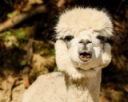
Cornell Cooperative Extension Specialists are working to develop a working group for fiber producers. This includes farms focusing on fiber as well as those who are harvesting fiber as a secondary crop from their livestock. Currently, the group is working to understand regional and state challenges within the fiber community to best develop collaboration and education efforts. If you are willing to share your challenges, please fill out this form. Your feedback is greatly appreciated!
Register for the Virtual CORE Pesticide Training in January
Joshua Putman, Field Crops and Forage Specialist
Southwest New York Dairy, Livestock and Field Crops Program

Join us for another round of CORE training to obtain your pesticide license or receive 1.75 DEC recertification credits in the CORE category. Register online for January 12th from 9am - 10:50am or January 14th from 11am - 12:50pm for only $20. We will provide an overview of the basic information involved in the pesticide application certification process and will present the basics of Integrated Pest Management (IPM) as well as general pesticide safety, regulations and pesticide resistance. *IMPORTANT NOTE* Because of COVID-19, the DEC did not require growers whose licenses expired in November of 2019 or later to renew their applicator's license in order to buy & spray restricted use materials during the 2020 growing season. That discretionary policy is no longer in effect. If your license expired between November 2019 and November 23, 2020, you must obtain the full number of recertification credits and renew your license by February 23, 2021. If your license expires after November 23, 2020, you will follow the typical DEC guidelines. Feel free to contact Josh Putman with any questions. We hope to see you there!
Nonlethal Predator Management
Amy Barkley, Team Leader & Livestock Specialist
Southwest New York Dairy, Livestock and Field Crops Program

Where there is livestock, especially grazing livestock, there are predators waiting to take advantage of a free and easy meal. While the kneejerk reaction is to eliminate the pressure through lethal means, there are non-lethal methods that can be just as successful. This is especially true if a population of predators that lacks boldness and aggression. Methods of control include managerial, physical, and biological. Selecting the proper set of tools to match predator pressure and livestock type is key to a robust control program.
Virtual CORE Pesticide Training and DEC Recertification
Joshua Putman, Field Crops and Forage Specialist
Southwest New York Dairy, Livestock and Field Crops Program

*IMPORTANT NOTE* Because of COVID-19, the DEC did not require growers whose licenses expired in November of 2019 or later to renew their applicator's license in order to buy & spray restricted use materials during the 2020 growing season. That discretionary policy is no longer in effect. If your license expired between November 2019 and November 23, 2020, you must obtain the full number of recertification credits and renew your license by February 23, 2021. If your license expires after November 23, 2020, you will follow the typical DEC guidelines.
The Results are in for SWNY! Soybean Cyst Nematode Distribution in the State
Joshua Putman, Field Crops and Forage Specialist
Southwest New York Dairy, Livestock and Field Crops Program
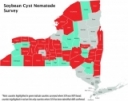
-Information prepared by Jaime Cummings, NYS Integrated Pest Management Program-
The 2020 statewide SCN survey revealed 23 NEW counties confirmed with at least one field positive for SCN. In SWNY, 3 out of 5 counties tested positive for SCN (Steuben, Allegany, and Chautauqua). This brings us to a total of 30 counties with SCN confirmations since 2016. The maps below illustrate the progress and results of our SCN testing over the past few years. Additional resources about SCN can be accessed at: https://www.thescncoalition.com/resources/tools-to-download. Also, check out these short videos titled "Let's Talk Todes" to learn more about managing soybean cyst nematode.
Farmland: To Purchase or to Lease?
Amy Barkley, Team Leader & Livestock Specialist
Southwest New York Dairy, Livestock and Field Crops Program

This year's growing season is coming to a rapid close. In thinking to the year ahead, how, where, and at what scale we want to farm may come back under the lens of consideration. Perhaps there is an opportunity to increase forage and crop production by expanding into more acreage. Maybe a chance to get into farming has presented itself. Whether you are looking to start a farm or are a seasoned farmer looking to expand the acreage of your enterprise, you can choose to either lease or purchase land.
End-of-Season Combine Clean-out Recommendations
Joshua Putman, Field Crops and Forage Specialist
Southwest New York Dairy, Livestock and Field Crops Program

For many growers in Southwest New York, fall harvest is coming to an end. Now is the time to prepare harvest equipment for winter storage. Proper preparation reduces the likelihood of animals nesting in the equipment which can lead to electrical damage resulting in fire, improves the function and longevity of parts, and puts a closure to the 2020 growing season.
Spotted Lanternfly Confirmed Found in NYS
Amy Barkley, Team Leader & Livestock Specialist
Southwest New York Dairy, Livestock and Field Crops Program

The Spotted Lanternfly, a foreign pest known to be highly destructive in crops including maple trees, apple trees, grape vines, and hops, has been identified on Staten Island, areas of the Hudson Valley, and in the Southern Tier. Monitoring is ongoing, and the public is urged to continue to report findings of the insects and egg masses through the colder months to Ag and Markets at spottedlanternfly@agriculture.ny.gov. Early reporting can help with the development of targeted management plans to slow the establishment and spread of this insect.
Managing Corn Rootworm and a New Control Option for New York Farmers
Joshua Putman, Field Crops and Forage Specialist
Southwest New York Dairy, Livestock and Field Crops Program
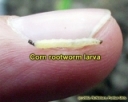
Biological Control of Corn Rootworm with Persistent Entomopathogenic Nematodes: An opportunity to try them on your farm
*Elson Shields, Entomology, Cornell University, Ithaca, NY
Corn rootworm (CRW) is the number one pest of corn in both NY and the U.S. Recent NY field data are showing that the biocontrol nematodes being released against alfalfa snout beetle are also having an impact on CRW after the field is rotated from alfalfa into corn. Research in NNY for the past 18 years has shown that a single field application of persistent biocontrol nematodes inoculates the field for multiple years and across rotations. In 75 fields following a typical alfalfa-corn rotation, not only did the biocontrol nematodes persist for multiple years at sufficient populations to suppress soil insects, but biocontrol nematode populations were higher after 4-years of corn than in the alfalfa before being rotated to corn. These results suggested the biocontrol nematodes were attacking CRW during the corn years of the rotation.
NY Farm Service Agency to Host Meetings on Coronavirus Food Assistance Program 2
Amy Barkley, Team Leader & Livestock Specialist
Southwest New York Dairy, Livestock and Field Crops Program

The U.S. Department of Agriculture's (USDA) Farm Service Agency (FSA) in New York is hosting two meetings about the Coronavirus Food Assistance Program 2 (CFAP 2). The first meeting will be Tuesday, November 17th at noon, and the second, which will focus on the specialty crops portion of CFAP 2, will be Wednesday, November 18th at noon. FSA is accepting applications for CFAP 2 through December 11, 2020. To find the latest information on CFAP 2, eligible crops, payment rates, and the application and payment calculator, visit farmers.gov/cfap.
The Importance of Testing Manure

Manure nutrients can vary from many different factors. Before applying it to your fields, especially if you're goal is to meet the nutritional needs of your crops, take the moment to get it sampled and tested. This article shares how to do that.
EPA Announces 2020 Dicamba Registration Decision
Joshua Putman, Field Crops and Forage Specialist
Southwest New York Dairy, Livestock and Field Crops Program

EPA Announces 2020 Dicamba Registration Decision
October 27, 2020 — On Tuesday, U.S. Environmental Protection Agency (EPA) Administrator Andrew Wheeler announced that EPA is approving new five-year registrations for two dicamba products and extending the registration of an additional dicamba product. All three registrations include new control measures to ensure these products can be used effectively while protecting the environment, including non-target plants, animals, and other crops not tolerant to dicamba. "With today's decision, farmers now have the certainty they need to make plans for their 2021 growing season," said EPA Administrator Andrew Wheeler. "After reviewing substantial amounts of new information, conducting scientific assessments based on the best available science, and carefully considering input from stakeholders we have reached a resolution that is good for our farmers and our environment."
Corn Diseases and Mycotoxin Contamination of Corn Grain in Southwest New York
Joshua Putman, Field Crops and Forage Specialist
Southwest New York Dairy, Livestock and Field Crops Program

Mycotoxin is a general term for a poison produced by a fungus and can be toxic when inhaled, absorbed through the skin, or consumed at very low concentration levels. Corn and small grain cereals are especially prone to mycotoxin accumulation in their seed tissue. In the past, it was believed that the fungus affected grain only during the postharvest stage, particularly when grain was stored under suboptimal conditions (hot and humid/moist). Although these factors can promote fungal growth in storage, this occurs during the growing season as well.
Ten Things You Should Know Before Leasing Land for Solar Development
Amy Barkley, Team Leader & Livestock Specialist
Southwest New York Dairy, Livestock and Field Crops Program

Development of land for solar energy projects is becoming common across the state of New York. These large projects require land leases from landowners, which can extend 40-50 years. While leasing land for solar development can provide supplemental income to a landowner, there are some things to keep in mind before signing your name on the dotted line. Daniel Brockett of Penn State Extension and George Thompson of Wilson, Thompson, and Cisek, LLC, help bring some of these important considerations to light.
Commissioner Ball Shares Reminder to Agribusinesses on NY Forward Guidance
Amy Barkley, Team Leader & Livestock Specialist
Southwest New York Dairy, Livestock and Field Crops Program

Commissioner Ball is reminding agritourism businesses of the importance of following NY-Forward Guidance, including those which offer pick-your-own fruits and vegetables, hayrides, corn mazes, and other fall activities. Strict enforcement of the facial covering, social distancing, and reduced capacity mandates is being implemented across all industries in NY. Best practices for low-risk outdoor activities can be reviewed here: https://smallfarms.cornell.edu/resources/farm-resilience/best-management-practices-for-agritourism-covid/
Taking, Preparing, and Submitting a Soil Sample for Testing
Amy Barkley, Team Leader & Livestock Specialist
Southwest New York Dairy, Livestock and Field Crops Program

Soil testing is the easiest way to identify and quantify nutrient imbalances in our agricultural soils. It will identify major nutrients such as nitrogen, phosphorous, and potassium as well as pH, organic matter, and some micronutrients. Following a proper sampling technique is essential to achieving a representative sample, and preparing both the sample and submission form appropriately will allow for complete test results in addition to precise nutrient and liming recommendations. For more information about soil testing or report interpretation, please reach out to Amy Barkley, Livestock and Beginning Farm Specialist at amb544@cornell.edu or (716) 640 - 0844 or Josh Putman, Forage and Field Crop Specialist at jap473@cornell.edu or (716) 490-5572.
Preventing the Spread of Troublesome Weeds at Harvest in Southwest New York
Joshua Putman, Field Crops and Forage Specialist
Southwest New York Dairy, Livestock and Field Crops Program

-Article information adapted from PennState Extension written by Dr. John Wallace and Heidi Reed-
Resistant weeds cause significant yield loss, increased production costs, and are becoming a bigger problem every year in New York. Farmers rarely proactively manage weeds to prevent or delay selection for herbicide resistance. They usually increase the adoption of integrated weed management practices only after herbicide resistance has occurred. Our most problematic herbicide-resistant weeds, like horseweed (marestail), waterhemp, and Palmer amaranth, can easily spread from one field, or one farm, to the next, as seeds get trapped in/on tillage, planting, and harvest equipment and ride field-to-field this time of year.
NESARE Invites Applicants for their 2021 Farmer Grant Program
Amy Barkley, Team Leader & Livestock Specialist
Southwest New York Dairy, Livestock and Field Crops Program
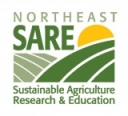
Northeast SARE is now accepting applications for its Farmer Grant Program. Up to $15,000 is available per project. The online system opens on Oct. 1 and applications are due by 5 p.m. on Nov. 17, 2020. The Farmer Grant Program funds farmers to explore new concepts in sustainable agriculture on production, marketing, labor, farm succession, social capital and other areas through experiments, surveys, prototypes, on-farm demonstrations or other research and education techniques. Grants may not be used to help start or expand farm businesses. Application materials, including detailed instructions and supporting documents, are posted at www.northeastsare.org/FarmerGrant. A webinar on how to apply is scheduled for Tuesday, October 6 from 12pm - 1pm. Please contact Amy Barkley, Livestock and Beginning Farm Specialist, at 716-640-0844 or amb544@cornell.edu if you are interested in applying for a SARE Farmer Grant.
Local Frost Advisories - What it Could Mean for Corn Producers in Southwest New
Joshua Putman, Field Crops and Forage Specialist
Southwest New York Dairy, Livestock and Field Crops Program

Frost can mean yield loss for crop producers, although the severity of damage varies based on crop maturity, topographical features and local climate conditions. A corn-killing freeze occurs when temperatures fall to 32 F for several hours or 28 F for a few minutes.
Second Round of Coronavirus Food Assistance Program for Farms Now Available
Alycia Drwencke, Dairy Management Specialist
Southwest New York Dairy, Livestock and Field Crops Program

The USDA's Farm Service Agency's (FSA) recently opened the second round of Coronavirus Food Assistance Program (CFAP) for agricultural businesses. If you are an agricultural producer whose operation has been affected by COVID-19, you are likely eligible for this second round of support. FSA will accept applications from September 21 - December 11, 2020 from agricultural businesses for this support. A full list of eligible commodities can be found here. For more information, or to apply, visit www.farmers.gov/cfap or contact your local FSA office. In the Southwest NY region, the county offices can be reached at: Allegany (585) 268-5133; Cattaraugus (716) 699-2375; Chautauqua (716) 664-2351; Erie (716) 652-1400; Steuben (607) 776-7398.
'Tis the Season for Deer Worm, written by Dr. tatiana Stanton
Amy Barkley, Team Leader & Livestock Specialist
Southwest New York Dairy, Livestock and Field Crops Program

The wind is becoming crisp. Leaves are falling. The world is getting ready to go to sleep, and most small ruminant producers can breathe a sigh of relief as most of the internal parasites that plague their stock also retire for the winter. However, there is one parasite that ramps up this time of year: meningeal worm, also known as deer worm. This parasite is transferred through the accidental ingestion of snails, slugs, and their slime, where it then migrates into small ruminants' spinal cords. Here, it has the potential to cause damage to the animals' central nervous systems. In this article, Dr. Stanton reviews the typical signs of a deer worm infection and potential treatments to discuss with your veterinarian.
So, You Want to Start a Farm? Resource Directory
Katelyn Walley, Business Management Specialist and Team Leader
Southwest New York Dairy, Livestock and Field Crops Program
A comprehensive collection of resources for beginning farmers as they embark on their information searching journey to start a farm business in SWNY. Information and resources compiled by Katelyn Walley-Stoll, Farm Business Management Specialist and Team Leader, Cornell Cooperative Extension's Southwest New York Dairy, Livestock, and Field Crops Program. Funding for this project provided by the State of New York and American Farmland Trust. Updated April 2021. For more information or further questions and inquiries, call 716-640-0522.
Lime Guidelines for Field Crops in New York
Amy Barkley, Team Leader & Livestock Specialist
Southwest New York Dairy, Livestock and Field Crops Program

Lime Guidelines for Field Crops in New York, written by Quirine M. Ketterings, W. Shaw Reid, and Karl Czymmek
Liming is an essential component of successful pasture and field crop management in the SWNY region. With most of our soils being heavy and acidic, plant growth can suffer. Yields may only weigh in at a fraction of their potential, and stand persistence, in the case of pastures and hay fields, can suffer. Fall is an excellent time of year to apply lime because it allows the material to begin to neutralize pH before the next season. Once soil testing has been completed and a liming recommendation is in hand, it is time to make decisions on the type of lime to use, time of year to apply it, and how it should be applied. This guideline from Cornell's Department of Crop and Soil Sciences explores these questions at length to help with the decision-making process. If you have questions about liming your pastures, reach out to Amy Barkley, Livestock and Beginning Farm Specialist at amb544@cornell.edu or (716) 640 - 0844. Questions on liming field crops can be directed to Josh Putman, Forage and Field Crop Specialist at jap473@cornell.edu or (716) 490-5572.
Monitoring Fields for Soybean Cyst Nematode in Southwest NY
Joshua Putman, Field Crops and Forage Specialist
Southwest New York Dairy, Livestock and Field Crops Program

We need your help! Take the test. Beat the pest.
Soybean Cyst Nematode (SCN) is the most destructive pest of soybean in the United States. Yield losses in soybean due to SCN have been estimated at more than $1 billion annually in the U.S. Because the nematode can be present in fields without causing obvious aboveground symptoms, yield losses caused by SCN are often underestimated.
Consider Planting Winter Wheat After the Hessian Fly-Free Date
Joshua Putman, Field Crops and Forage Specialist
Southwest New York Dairy, Livestock and Field Crops Program

As fall approaches, growers should consider the recommended timing for planting winter wheat. For years, the standard recommendation for profitable wheat production in New York has been to plant wheat after the Hessian fly-free date. This recommendation is based on the fact that Hessian fly adults would no longer be alive as there are no remedial measures available to save an infested crop. An article prepared by Ken Wise, with the New York State Integrated Pest Management Program, discusses the recommend timing to plant wheat to avoid injury from the Hessian fly as well as a detailed description about this pest. For more information about winter cereal production, contact Josh Putman at 716-490-5572 or jap473@cornell.edu.
Don't Forget to Complete the 2020 Census!
Alycia Drwencke, Dairy Management Specialist
Southwest New York Dairy, Livestock and Field Crops Program

Have you completed the 2020 Census? Completing the 2020 Census will determine where over $675 billion in federal funding is spent in states and communities for the next ten years. When filling out the Census, your personal information is kept confidential by law. Whether it's funding in communities across your state or helping determine the number of seats your state will have in the U.S. House of Representatives—every count makes an equal impact. Be sure you are counted and visit 2020Census.Gov for more information.
Governor Cuomo Announces New State Guidelines for Agritourism
Amy Barkley, Team Leader & Livestock Specialist
Southwest New York Dairy, Livestock and Field Crops Program

On September 1st, Governor Cuomo announced new state guidance, aligning with NY Forward requirements, for corn mazes, pick-your-own fruit and vegetable operations, hayrides, and haunted houses. Outlined are safety precautions for these operations to take during the upcoming fall season. Read the full guidance here for more information.
Corn Silage Harvest
Joshua Putman, Field Crops and Forage Specialist
Southwest New York Dairy, Livestock and Field Crops Program

Corn silage harvest is under way in New York. An article recently published by Cornell CALS PRO-DAIRY, describes the Corn Silage Processing Score (CSPS), implementation of kernel processing, and how to monitor processor performance. In a second article, they explain the effect of corn plant characteristics on corn silage processing scores. Listen to the newly published PODCAST series titled "Corn Silage Harvest Considerations." For more information, contact Field Crops Specialist Josh Putman.
2020 Changes to New York Farm Labor Laws: Recording & Presentation
New York's farm labor laws changed greatly with the 2019 Farm Laborer Fair Labor Practices Act (FLFLPA), the laws changed again this year when several amendments were included in the Budget Act in 2020. On August 17, 2020, Cornell Ag Workforce Development and Northeast Dairy Producers Association (NEDPA) recorded a webinar to help all farmers understand the changes. Find below links to a PDF of the presentation with active links and a recording of "2020 Updates to New York Farm Labor Laws."
- Link to a PDF of the meeting presentation, including links to additional information
- Link to a recording of the webinar
NYS Forage Exchange Website Announced
Joshua Putman, Field Crops and Forage Specialist
Southwest New York Dairy, Livestock and Field Crops Program

The NYS Forage Exchange provides a free system to match potential sellers and buyers of forage within New York State. Sellers can easily register within the system and then post the forage they have available to sell. Potential purchasers can browse the advertisements, and then contact the seller through email for additional information or to complete purchase arrangements.
Onboarding Dairy Employees 2020: Safe, Productive and Engaged from Day One

Employee training and retention can be difficult on farms. Cornell Agricultural Workforce Development is seeking dairy farmers to participate in the second year of an onboarding project funded by the New York Farm Viability Institute. Over the next year, the Ag Workforce Development Team will partner with 25 farms in a three-session Zoom series to develop onboarding materials, trainings and methods. If your farm is looking for a way to improve employee retention and increase overall productivity of employees, contact Richard Stup, Cornell Agricultural Workforce Development, at res396@cornell.edu, Alycia Drwencke, Dairy Management Specialist or Katelyn Walley-Stoll, Farm Business Management Specialist.
Register for the Virtual Cornell Hemp Field Day
Joshua Putman, Field Crops and Forage Specialist
Southwest New York Dairy, Livestock and Field Crops Program

Due to COVID-19 safety restrictions, this year's Hemp Field Day is being presented virtually. Pre-Register now to attend this event!
SWNY Field Crop Chronicle - 8/5/2020
Joshua Putman, Field Crops and Forage Specialist
Southwest New York Dairy, Livestock and Field Crops Program

The Southwest NY Diary, Livestock, Field Crops Program is excited to announce a new method of delivering field crop topics and information!
Early-Season Corn Disease: Northern Corn Leaf Blight
Joshua Putman, Field Crops and Forage Specialist
Southwest New York Dairy, Livestock and Field Crops Program

In 2019, northern corn leaf blight (NCLB) appeared throughout the Southwest New York region. Weather conditions in 2020 are favorable and might lead to disease infestations in SWNY.
Don't Miss Out On The Next CORE Pesticide Training July 21st, 6PM-7:50PM!
Joshua Putman, Field Crops and Forage Specialist
Southwest New York Dairy, Livestock and Field Crops Program

Our first online CORE pesticide training was a huge success with great participation from the group. The SWNY Dairy, Livestock, and Field Crops team is hosting a second training this coming Tuesday, July 21, from 6-7:50PM.
Heat-Stress and Lack of Moisture on Corn and Soybeans in SWNY
Joshua Putman, Field Crops and Forage Specialist
Southwest New York Dairy, Livestock and Field Crops Program

Last week, SWNY was experiencing severe heat as well as symptoms of drought stress and seen in many crops. Corn leaves were rolling, soybean leaves were flipped, leaf tissue was turning grey, and there was no sight of rain.
APHIS Seeks Comment on the Transition to RFID Tags as the Only Official Identifi
Amy Barkley, Team Leader & Livestock Specialist
Southwest New York Dairy, Livestock and Field Crops Program
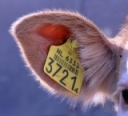
The USDA's Animal Health and Plant Inspection Service (APHIS) is looking for public comment on their proposal to make Radio Frequency IDentification (RFID) tags the only official ear tag approved for use in cattle (dairy, beef, bison) by January 1, 2023 and are seeking input on the proposed timeline for implementation. The transition would phase out metal tags, which are now currently allowed to be used in addition to RFID tags. While there would be no change to the existing regulations, these tags would allow for more accurate disease traceability by APHIS. Public comments will be accepted through October 5th, 2020 by going to: https://www.federalregister.gov/d/2020-14463.
Management of Drought on Pasture
Amy Barkley, Team Leader & Livestock Specialist
Southwest New York Dairy, Livestock and Field Crops Program

SWNY is beginning to encounter very dry conditions, where precipitation has been isolated to pop-up showers and looking to the sky for rain has started to become the new normal. As of July 9, the US Drought Monitor, indicated that all of SWNY is abnormally dry. Just last week, only the eastern side of Steuben County was listed in this classification, and a week prior to that, the condition was isolated to the northeastern part of the state and Finger Lakes region. Dry conditions hit pastures hard. Proper forage management to ensure sustainable nutrition for livestock as well as vitality of the pasture should be a priority, especially if those pastures are a primary source of livestock feed. This article explores strategies for pasture and livestock, and was adapted from Doo-Hong Min, Michigan State University Extension and Derrell Peel, Oklahoma State University by Dr. Mike Baker.
Preparing Livestock Producers for Drought Conditions - Farmer Resources
Amy Barkley, Team Leader & Livestock Specialist
Southwest New York Dairy, Livestock and Field Crops Program

As more of the region heads into abnormally dry conditions, it's important to keep in mind strategies to keep herds and flocks healthy, hydrated, and fed. Dr. Mike Baker has prepared a series of drought resources which can be found on the Beef Cattle Management page. Strategies to stretch forages, change numbers of stock, wean early, and keep health up with enhanced nutrition are all ways to ensure that your stock makes it through the drier times. This list contains articles covering various drought-related topics from livestock educators across the state.
Spreading Dogbane - A problematic weed in SWNY
Joshua Putman, Field Crops and Forage Specialist
Southwest New York Dairy, Livestock and Field Crops Program

Josh Putman, Field Crops Specialist with the SWNY Dairy, Livestock & Field Crops program recently ran across a plant in a hay field that had not been worked for a few years and was very difficult to identify. Pictures of the weed were sent to Cornell's Weed Ecology and Management Laboratory and correctly identified. Spreading dogbane, Apocynum androsaemifolium, is in the same family as milkweeds and swallowworts, and the same genus as hemp dogbane. This perennial plant is found in open, dry areas and in disturbed habitats throughout New York and most of the US and Canada.
Dicamba Notice to Users, Distributors and Sellers - June 29, 2020
Joshua Putman, Field Crops and Forage Specialist
Southwest New York Dairy, Livestock and Field Crops Program

On June 3, 2020, the United States Court of Appeals for the Ninth Circuit vacated EPA's registration of three products containing the active ingredient dicamba, which effectively cancelled their federal registrations. The three products are: Xtendimax with Vaporgrip Technology, Engenia, and FeXapan.
On June 8, 2020, in response to the Court's decision, EPA issued a Cancellation Order for these three products. In light of the Court's decision associated with these registrations and the provisions of EPA's Cancellation Order to implement that decision, DEC is taking these actions:
1) Registrations - The registrations of the three products will be cancelled as of July 31, 2020 in accordance with the provisions of ECL Section 33-0713. Thirty days' notice will be provided to the registrants of these products.
2) Distribution or Sale - Distribution or sale of existing stocks of the three products shall be limited as follows:
- Distribution or sale by registrants is prohibited immediately, except for distribution for the purposes of proper disposal.
- Distribution or sale of products that are already in the possession of someone other than the registrant is permitted only for disposal or to facilitate return to the registrant or a registered establishment.
- Distribution or sale by commercial applicators is permitted to facilitate use no later than July 31, 2020.
3) Use - All use, including storage of open containers, is prohibited after July 31, 2020.
Questions about dicamba may be directed to pesticidecompliance@dec.ny.gov or ppr@dec.ny.gov or by calling 518-402-8727.
Ecological Control of Pasture Flies
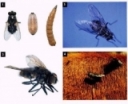
Pasture flies are more than a mere nuisance; they can result in production losses on cattle, sheep, goats, and other pastured livestock. Around June, the weather is warm enough that so long as there's enough moisture around, the populations of these pests will explode. A robust control program is necessary to prevent these populations from getting out of control. While chemical controls may work now, the flies will build resistance over time. In this article, specialists from the South Central NY Dairy and Field Crops Team review the top three fly pests: face flies, horn files, and stable flies, as well as integrated pest management techniques of pastures and barns to help keep the populations low, thereby reducing the need for chemical control methods.
Determining the Finish of Market Lambs
Amy Barkley, Team Leader & Livestock Specialist
Southwest New York Dairy, Livestock and Field Crops Program

Consumers of lamb demand a high-quality product, and are willing to pay a premium price for it should it meet or exceed their expectations. This consideration is especially important for those farmers marketing directly to the consumer; there is no farm anonymity here, and the consumer will know exactly the quality they can expect from you. That said, regardless of if a farm is selling direct or selling to a larger processor, it is known that an animal that has the proper ratio of fat to muscle will have cuts with great flavor, juiciness, and tenderness. By selling quality lamb or young mutton, there is potential to charge a premium price if selling direct, getting paid a premium price if selling to a processor, and the potential to keep a direct market consumer coming back again and again. In this article, Livestock Specialist, Amy Barkley, outlines finishing determinations shared by the National Sustainable Agriculture Information Service (ATTRA).
NYSDOL Updates Guidance FAQ About NY Farm Labor Laws by Richard Stup

Richard Stup with Cornell Agricultural Workforce Development shares updates on the guidance for NY farm labor laws.
The New York State Department of Labor (NYSDOL) recently released a new set of frequently asked questions (FAQ) that address the 2019 Farm Laborer Fair Labor Practices Act (FLFLPA) and the recent changes to FLFLPA that were made in the New York budget process. Find the FAQ here: https://labor.ny.gov/immigrants/farm-laborers-fair-labor-practices-act/flflpa-frequently-asked-questions.pdf
Pay special attention to the set of questions under the heading "Coverage." This section includes NYSDOL's interpretation of who is a "farm laborer" and who is not. Be aware that being family doesn't just require the common definition of the concept. As question 6 indicates, to be defined as family also requires a certain sense of obligation to the business and that pay is not based on hours or days of work. The law is in effect now but NYSDOL continues to be prevented from enforcing it with respect to family members and other exempt employee by the temporary restraining order issued by a federal judge in Buffalo. This situation will likely continue until the lawsuit is resolved.
Cornell Agricultural Workforce Development and other industry organizations are continuing to seek information and clarification from NYSDOL about important details and questions that the new laws raise.
Poultry Processing Waste Management via Composting
Amy Barkley, Team Leader & Livestock Specialist
Southwest New York Dairy, Livestock and Field Crops Program

Now that the weather is finally consistently warm and pastures are lush, most producers of pastured broilers and ducks are harvesting their first flocks or beginning their flock rotation cycles. Those who are raising turkeys and geese are also getting ready to or have already placed their birds in preparation for the fall and winter holiday seasons. As the harvest windows for these birds arrive, producers processing their own birds or processing birds for others need to arrange for a way to dispose of the waste from processing. These waste products include blood, feathers, offal, heads, feet, rinse water, and cooling water and must be properly dealt with to reduce their environmental impact. Additionally, and fortunately, what we traditionally may see as waste products can go on to live a second life as nutrients for other crops on the farm though composting while eliminating the costs of having to pay for other disposal services. Livestock Specialist, Amy Barkley, explores the basics poultry processing waste composting in this article. More information on composting poultry processing waste, other butchery waste, and livestock mortalities can be found on the Cornell Waste Management Institute Website.
Characteristics of Determining Market Readiness of Finished Cattle
Amy Barkley, Team Leader & Livestock Specialist
Southwest New York Dairy, Livestock and Field Crops Program

Regardless of how beef animals are finished, either by grass, grain, or a combination, market weight animals that are sent to the auction or processor should be finished properly. Finishing is the process where an animal is fed a high energy diet to help them put on intramuscular fat, resulting in desirable marbling, which leads to a juicer, more tender, and more flavorful cuts. These desirable quality characteristics result in higher prices at market and a better experience for consumers. Finishing looks different on a purebred steer vs a dairy cross or a heifer vs a steer, but regardless of an animal's genetic background, these animals all have characteristics which show that they are ready to go to market. This article reviews the characteristics of finishing as described in the Cornell Small Farms video, "Determining Market Readiness of Finished Cattle", narrated by Dr. Mike Baker, found here: https://www.youtube.com/watch?v=HrF5aCEAI-0&feature=emb_title
Black Cutworm and True Armyworm Moth Captures and Weed Pressure in SWNY
Joshua Putman, Field Crops and Forage Specialist
Southwest New York Dairy, Livestock and Field Crops Program

This week, Field Crops Specialist, Josh Putman, with the Southwest NY Dairy, Livestock, and Field Crops program scouted traps and fields throughout the region. In Avoca, NY, both moth species were present having 7 cutworm and 10 armyworm; not much larvae feeding was found. In Springville, NY 3 black cutworm and 3 armyworm were collected; we now have evidence of cutworm feeding on corn plants. According to Dr. Mike Stanyard of the NWNY Dairy, Livestock, and Field Crops team, it is important to be out scouting your fields now for pest damage and economic threshold that may require management. In addition, with the warm temperatures and increased day length, we are seeing an increase of weed pressure in our field crop production systems. Summer annual weeds compete for sunlight, nutrients and water. Don't let these pests rob your crop yields!
On-Farm Dairy Processing Webinar Recording
Alycia Drwencke, Dairy Management Specialist
Southwest New York Dairy, Livestock and Field Crops Program

This recording is from a free on-farm dairy processing webinar hosted on May 21st, 2020 by Cornell Cooperative Extensions Southwest NY Dairy, Livestock and Field Crops, and Harvest New York Programs with New York State's Department of Agriculture and Market's Division of Milk Control and Dairy Services. This is for dairy farmers who are interested in diversifying or vertically integrating their business. An introduction of factors to keep in mind when considering dairy processing for a farm's operation. This overview will focus on business considerations and a brief summary of regulatory requirements.
Spring 2020 SWNY Beef Industry Virtual Summit Meeting Highlights
Amy Barkley, Team Leader & Livestock Specialist
Southwest New York Dairy, Livestock and Field Crops Program

On May 5, 2020, SWNY beef farmers, CCE ag staff from local extension offices, and the SWNY Dairy, Livestock, and Field Crops Team gathered at a virtual summit to discuss beef production in the region. The region encompasses Allegany, Cattaraugus, Chautauqua, Erie, and Steuben counties. Discussion points were focused on factors surrounding changes to business as a result of the COVID-19 pandemic, in addition to what programming CCE can provide to regional farmers now and into the future. This white paper details major findings, insights, and educational programming ideas.
Monitoring Your Alfalfa Fields for Weevil
Joshua Putman, Field Crops and Forage Specialist
Southwest New York Dairy, Livestock and Field Crops Program
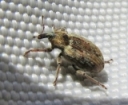
Despite this cold, wet spring, which has delayed planting and other farming efforts across NY, our pests and diseases continue to rear their ugly heads. This serves as a reminder that we need to continue to be vigilant with our scouting efforts for early detection of pests to make sound management decisions.
Creating Consumer-Friendly Bulk Meat Sales
Amy Barkley, Team Leader & Livestock Specialist
Southwest New York Dairy, Livestock and Field Crops Program

With uncertainty in meat markets for both producers and consumers alike, there has been a transition by some livestock producers to the direct marketing sector. For those already direct marketing, many have noticed a marked increase in the number of new customers for local meats. These opportunities do come with a set of rules and regulations to follow as well as tips to help make first-timers customers for life. Cornell Cooperative Extension has partnered with Ag Marketing Consultant, Matt LeRoux, to share "how to" tips on getting started with bulk meat sales. The recording of the original presentation, shared on May 4th and 13th, can be found on the Cornell Beef Blog at http://blogs.cornell.edu/beefcattle/producer-resources/creating-consumer-friendly-bulk-meat-sales/.
Soil Temperatures and Insect Captures Remain Low in Southwest New York
Joshua Putman, Field Crops and Forage Specialist
Southwest New York Dairy, Livestock and Field Crops Program

As daytime temperatures struggle to get above 50 F and nighttime temperatures falling below freezing, soils in Southwest NY are warming at a slow pace. Average soil temperatures across the SWNY region ranged from 42-56 F. Black cutworm and true armyworm moth counts also remain low as Avoca, NY had 0 black cutworm and 2 armyworm. Springville, NY location had 2 black cutworm and 3 armyworm moths in the traps. Weekly monitoring of these pests will continue and as temperatures continue to rise, we need to be scouting our fields for potential larvae. Contact Field Crop Specialist, Josh Putman, with the SWNY Dairy, Livestock, and Field Crops team for correct pest identification. For additional information, see the Crop Alert provided by the NWNY Diary, Livestock and Field Crops team.
Caught! Black Cutworm and True Armyworm Moths Making Their Way into Southwest Ne
Joshua Putman, Field Crops and Forage Specialist
Southwest New York Dairy, Livestock and Field Crops Program

Black cutworm and True armyworm are problematic insects that can significantly cause damage here in New York. We are working to monitor these moths as they enter the region.
It's That Time of Year - Managing to Prevent Grass Tetany

Grass tetany, or hypomagnesemia, is a potentially fatal condition classified by low blood magnesium and is exacerbated by the consumption of low-magnesium forages. This article written by Dr. Mike Baker further explains the biology, risk factors in both animals and pastures, and practical prevention methods.
Considerations for Slowing Feedlot Cattle Growth
Amy Barkley, Team Leader & Livestock Specialist
Southwest New York Dairy, Livestock and Field Crops Program

Considerations for Slowing Feedlot Cattle Growth, by Iowa State University and University of Wisconsin
Iowa State University Extension Beef Specialists, Iowa Beef Center University of Wisconsin Extension Livestock Program Educators, and University of Wisconsin Department of Animal Science Faculty have been evaluating the cattle markets, and what options producers have for their cattle at a time when beef prices are low and slaughter and processing capacities are down. Although not ideal, one choice may be to slow the rates of finishing cattle growth in an effort to wait for the market to turn around. This article details ways to do this for cattle at different stages, based on the goals of the operation. The overarching goal is to slow growth effectively without a heavy financial burden or causing negative effects on the finished carcass.
Cornell Pesticide Management Education Program
Joshua Putman, Field Crops and Forage Specialist
Southwest New York Dairy, Livestock and Field Crops Program
Along with the increased use of disinfectants and sanitizers during the COVID-19 pandemic,
there has been an increase in adverse health effects from the misuse of these
products. There have also been several fraudulent products produced during this
time that potential applicators should be made aware of.
Beef Market Update, April 16th, 2020
Amy Barkley, Team Leader & Livestock Specialist
Southwest New York Dairy, Livestock and Field Crops Program

On April 16, 2016, Dr. Mike Baker, Betsy Hodge, and Bill Bullock shared a marketing update for the beef industry. At this time, the industry is reporting revenue losses and decreased capacity for processing in response to decreased demand and the implementation of measures which safeguard employee health. For those who have cattle which are ready for market, recommendations for different classes of cattle were discussed.
For the latest NYS beef cattle market information, visit the Cornell Beef Management website: https://blogs.cornell.edu/beefcattle/market-information/.
Traps being set in Southwest New York
Joshua Putman, Field Crops and Forage Specialist
Southwest New York Dairy, Livestock and Field Crops Program

Black cutworm and True armyworm traps are being set throughout Southwest NY to monitor moth flights from the south as well as the west. These can be very problematic to field crop and hay producers and it is important to monitor your fields before they cause economic damage. Recently, other Extension Specialists have caught True armyworm moths and we will continue to monitor the traps that are being placed in SWNY.
USCIS Gives H-2A Workers Temporary Flexibility to Stay and Work Longer
Alycia Drwencke, Dairy Management Specialist
Southwest New York Dairy, Livestock and Field Crops Program

Cornell Agricultural Workforce Development has shared some of the key excerpts on H-2A updates. Notice was published in the Federal register on Monday that gives H-2A workers temporary flexibility to stay and work longer in the United States.
5-Point Checks for Small Ruminants
Amy Barkley, Team Leader & Livestock Specialist
Southwest New York Dairy, Livestock and Field Crops Program

Internal parasites are a common problem for small ruminants. No matter the production system, time of year, or breed, it is fair to say that all small ruminants have a parasite load to some extent. A 5-point check is a comprehensive analysis of an animal's condition to determine if it is exhibiting signs related to a potential high internal parasite load, using an evaluation at 5 points over the animal's body. Not all animals will exhibit all signs, so a combination of the intensity of the signs present and experience can help producers make timely management decisions.
How warm are your soils? Things to consider prior to planting
Joshua Putman, Field Crops and Forage Specialist
Southwest New York Dairy, Livestock and Field Crops Program
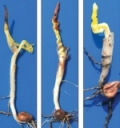
Selection of optimal planting date is one of the most critical factors in the decision making process for producers. When making this decision, producers should consider soil temperatures rather than just calendar dates. How warm are your soils?
Management Strategies During COVID-19 from PRO-DAIRY
Alycia Drwencke, Dairy Management Specialist
Southwest New York Dairy, Livestock and Field Crops Program

Several resources have been put together by the Cornell PRO-DAIRY team and Cornell CALS Faculty to cover management and financial considerations for dairy farms during COVID-19.
NYS DEC delays enforcement of the pesticide certification period
Joshua Putman, Field Crops and Forage Specialist
Southwest New York Dairy, Livestock and Field Crops Program

Pesticide Certification and Business Registration during Pause-NY: DEC is taking the following actions to temporarily allow regulatory flexibility and continued pesticide application and business operations during Pause-NY due to the unique conditions facing New York and the entire nation.
Reliable Resources for Spanish- & English-Speaking Farmworkers about COVID-19

Libby Eiholzer, CCE Northwest NY Dairy, Livestock & Field Crops Team, and Richard Stup, Cornell Agricultural Workforce Development have compiled reliable resources for farm workers on COVID-19 in both English and Spanish.
Scout your hay fields to assess winter annual weed pressure
Joshua Putman, Field Crops and Forage Specialist
Southwest New York Dairy, Livestock and Field Crops Program

Alfalfa and grass hay stands are greening up across Southwest NY and all across Western NY over the last 10 days. Recently, Field Crops Specialist Josh Putman with the SWNY Dairy, Livestock, and Field Crops Team, has been out monitoring fields for potentially damaging pests in hay production fields. Winter annual weeds are being seen in high numbers and even more so in older hay stands.
Don't send cows to market that are not fit to transport, Dr. Mike Baker
Alycia Drwencke, Dairy Management Specialist
Southwest New York Dairy, Livestock and Field Crops Program

Dr. Mike Baker, Cornell Beef Extension Specialist, reminds us to check for fitness of transport prior to sending cattle to market in his blog. Included are links to useful resources for determining fitness for transport, such as a checklist developed by Dr. Baker and Rob Lynch, DVM, PRO-DAIRY.
Impact of Beef Processing Plant Closures
Amy Barkley, Team Leader & Livestock Specialist
Southwest New York Dairy, Livestock and Field Crops Program
Impact of Beef Processing Plant Closures, written by Dr. Mike Baker
In response to the COVID-19 pandemic, large processing plants servicing NY beef producers have made changes to allocations of which and how many beef animals are harvested to meet current consumer demand. As of Monday, March 30th, positive tests among plant workers have resulted in a temporary closure of one of the region's most prominent processing plants, JBS, in Souderton, PA. In response, Dr. Mike Baker of Cornell University wrote this article, which explores what this means for farmers, while giving recommendations of best management practices to get producers through this transition period. Read the full article here.
Biosecurity for People: 7 Steps to Protect Farm Workers from COVID-19

Mary Kate Wheeler, Farm Business Management Specialist with the South Central NY Dairy & Field Crops Team, shares 7 tips for protecting your farm employees from COVID-19 in her latest blog post.
Traps being set for black cutworm and armyworm - Watch your fields!
Joshua Putman, Field Crops and Forage Specialist
Southwest New York Dairy, Livestock and Field Crops Program
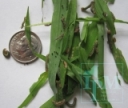
True armyworm (aka Common armyworm) is a problem in agronomic and turf production systems here in New York. They do not overwinter in New York, but fly north from states to our south in the spring. Armyworm moth migrations are somewhat sporadic, cyclic from year to year, and difficult to predict. We are gearing up to set traps throughout the region to help growers predict the potential risk of armyworm infestation in wheat and corn this spring.
Online Quality Assurance Trainings for Beef, Sheep, and Pork Are Available!
Amy Barkley, Team Leader & Livestock Specialist
Southwest New York Dairy, Livestock and Field Crops Program

While in-person certification classes may be postponed for the time being, opportunities to take online certification trainings in sheep, beef, and pork quality assurance are available!
Statewide herbicide resistance screening to start in 2020: Help us help you!
Joshua Putman, Field Crops and Forage Specialist
Southwest New York Dairy, Livestock and Field Crops Program

Herbicide-resistant weeds are an increasing issue in the United States. Here in NY, we are finding some very problematic species that can cause issues with your farming operation. This is one way Weed Scientists here in the state are looking to monitor these pests.
Still looking for DEC recertification credits? Here is an opportunity for you!
Joshua Putman, Field Crops and Forage Specialist
Southwest New York Dairy, Livestock and Field Crops Program

Are you interested in obtaining recertification credits for your applicator license? Here's how to obtain points!
Achieving a better price for you beef or dairy feeder cattle, Dr. Michael Baker

Recently, Dr. Michael Baker, Cornell University Beef Extension Specialist, shared some ideas on how you can add value to your calves. The full report can be found here.
COVID-19 and Your Dairy Webinar
Alycia Drwencke, Dairy Management Specialist
Southwest New York Dairy, Livestock and Field Crops Program

Richard Stup, PhD, Cornell Agricultural Workforce Development, and Rob Lynch, DVM, Cornell CALS PRO-DAIRY hosted a webinar recently discussing COVID-19 and Your Dairy, which is now available online with additional resources.
Video describing COVID-19 in Spanish

The Cornell Farm Worker Program has put together a video describing COVID-19 in Spanish.
NY FarmNet Continues to Offer Free Services - Call 1-800-547-3276
Katelyn Walley, Business Management Specialist and Team Leader
Southwest New York Dairy, Livestock and Field Crops Program
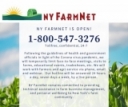
NY FarmNet is continuing to support our agricultural producers through free and confidential consultations.
Formulating Rations with Pearson Squares
Amy Barkley, Team Leader & Livestock Specialist
Southwest New York Dairy, Livestock and Field Crops Program
When formulating simple diets for any species, using the Pearson Square method can be of assistance. This system uses a pen, paper, and series of ratios to help determine the mix of two feed ingredients to meet the nutrition goal set for a certain nutrient. Multiple Pearson squares can be used together to help producers formulate simple diets.
Ration Balancing for Beef Cattle
Amy Barkley, Team Leader & Livestock Specialist
Southwest New York Dairy, Livestock and Field Crops Program

Beef nutrition is more than just providing the cattle with feedstuffs. Testing forages and ration balancing with the help of a nutritionist and/or nutrition calculators can help develop a diet which can improve rates of gain, body condition, finishing quality, and result in an animal that is more ideally suited for market.
Elements of IPM for Dairy and Beef Cattle by Ken Wise & Keith Waldron

Ken Wise and Keith Waldron, with the New York Integrated Pest Management Program share useful resources for incorporating IPM on your farm. IMP can be used to help control fly populations on dairy and beef cattle farms.
New York Beef Producers' Association Regional Meetings Have Been Scheduled
Amy Barkley, Team Leader & Livestock Specialist
Southwest New York Dairy, Livestock and Field Crops Program
The New York Beef Producer's Association has scheduled their regional meetings. Meetings will include a lunch or dinner, business meeting, and presentations on timely beef industry topics. Membership in the NYBPA isn't required to attend the meetings.
Region 2: Cattaraugus and Chautauqua Counties - Saturday, March 14th
Region 1: Erie County - Monday, March 16th
Region 4: Allegany and Steuben Counties - Saturday, March 28th
Tips on Recruiting and Retaining Quality Employees on your Dairy Farm
Alycia Drwencke, Dairy Management Specialist
Southwest New York Dairy, Livestock and Field Crops Program

Libby Eiholzer of the Northwest New York Dairy, Livestock & Field Crops Program shares information on retaining employees with DairyBusiness.
An Update from SWNYDLFC
Katelyn Walley, Business Management Specialist and Team Leader
Southwest New York Dairy, Livestock and Field Crops Program

Since July 1st, 2019, our new program has been busy with on-boarding, needs assessment, educational programming, and getting the chance to meet some of our region's amazing farmers. We've hired four specialists that are on-board and ready to hit the ground running in the specialty areas of Farm Business Management, Field Crops, Dairy Management, and Livestock. We're working with each of our five county associations' Executive Directors, Board of Directors, Program Committees, and Agriculture Program Staff to get to know the region and its programming needs while introducing this collaborative model of dairy, livestock, and field crops outreach.
African Swine Fever
Katelyn Walley, Business Management Specialist and Team Leader
Southwest New York Dairy, Livestock and Field Crops Program

African Swine Fever (ASF) is a viral disease that is rapidly spreading across Europe and Asia - with potential to affect the North American Swine Industry and have crippling economic impacts.
Confidently Hosting a Farm Tour - Part One - What's Your "Why Bother" ?
Katelyn Walley, Business Management Specialist and Team Leader
Southwest New York Dairy, Livestock and Field Crops Program

We've been approached by many agricultural producers who are interested in hosting a farm tour, but are unsure of where to start. Our hope is that this article series will help our agricultural community share the stories of their farms, and feel confident while doing so.
Upcoming Events
Boots in the Barn: Cornell Dairy Research Updates
January 13, 2026
January 20, 2026
January 27, 2026
February 3, 2026
February 10, 2026
February 17, 2026
February 24, 2026
Webinar: Converting Old Dairy Barns into swine Facilities
January 21, 2026 : Webinar: Converting Old Dairy Barns into swine Facilities
Southern Tier Crop Congress
January 28, 2026 : Southern Tier Crop Congress
Belfast, NY
Announcements
Cows, Crops & Critters Newsletter Sponsorship
TRYING TO REACH GROWERS AND AGRIBUSINESSES IN OUR SOUTHWEST REGION OF NEW YORK?Weekly Email Update: Shared with 625+ households who have signed up with our program.
Monthly Paper Mailer: To reach our stakeholders and farmers who lack internet access, we send out a monthly mailer where your company's logo and contact information would be featured with a mailing list of 330+ households.
If you sponsor our weekly and monthly publications you reach approximately 955 households.






